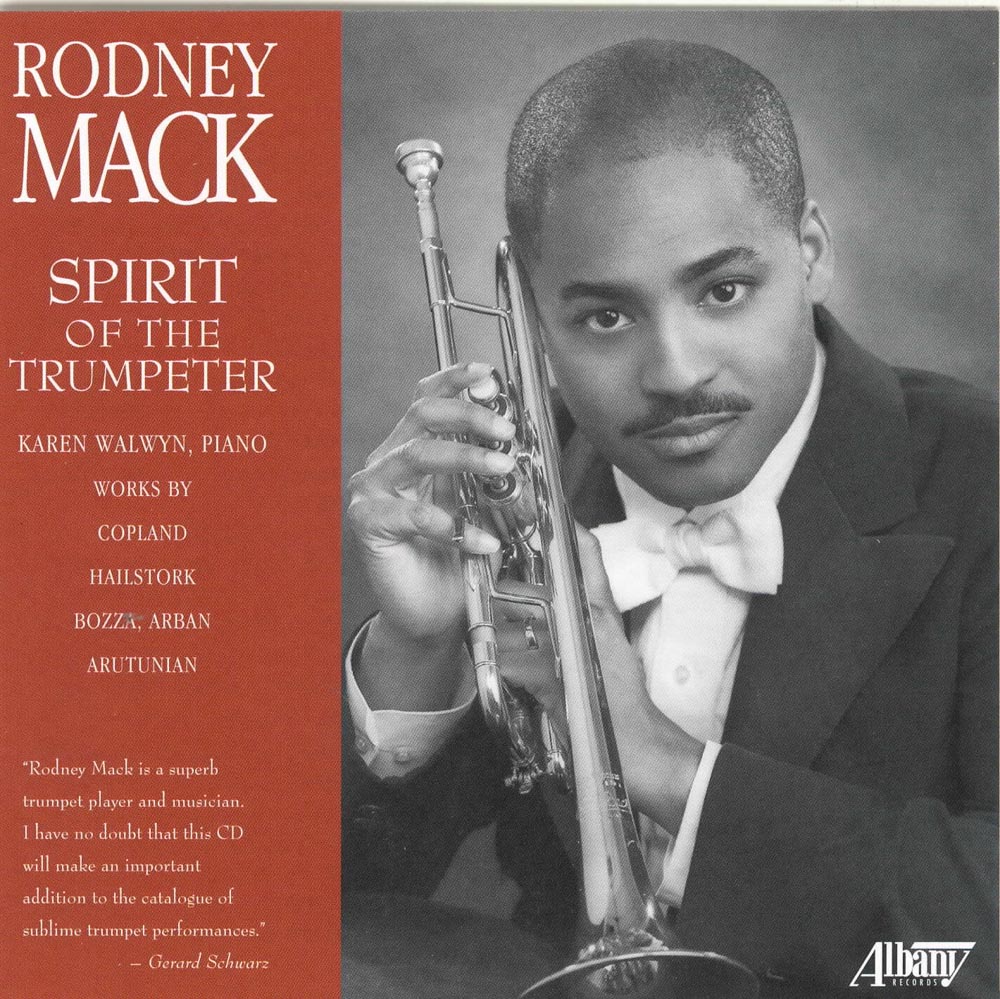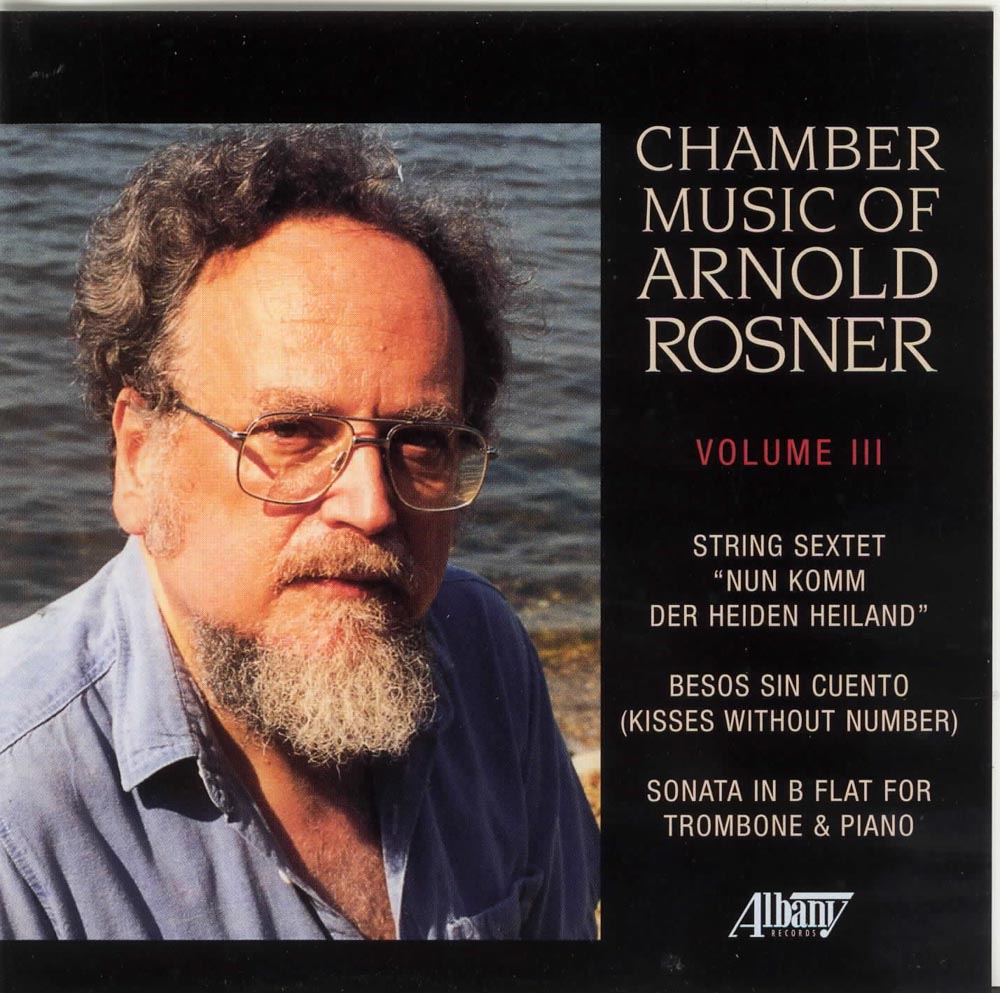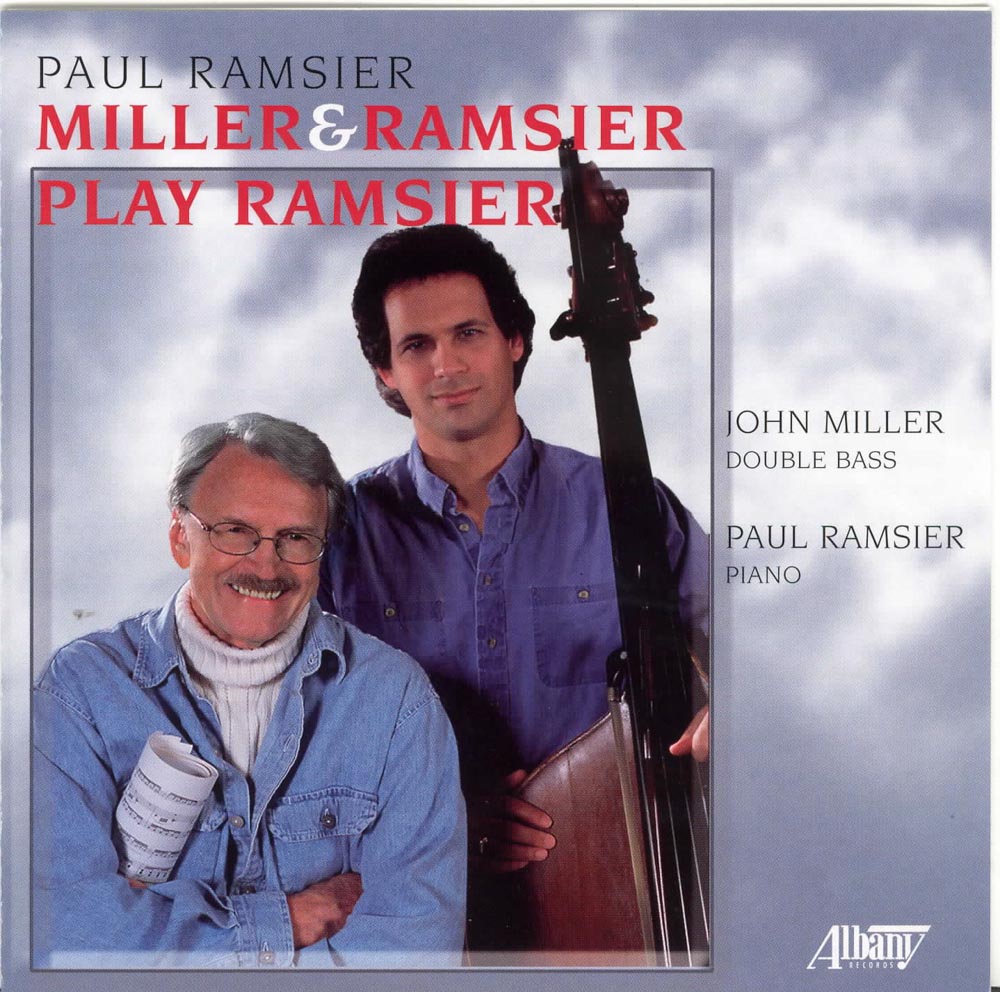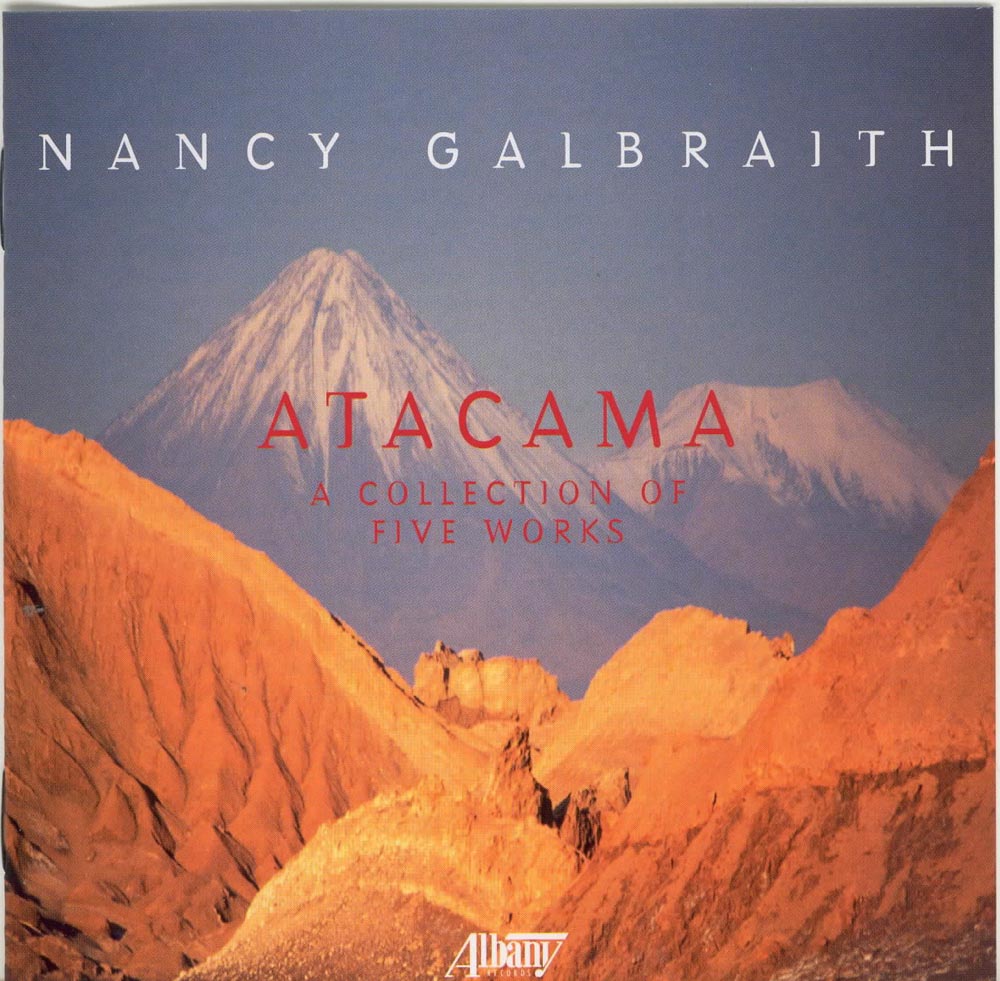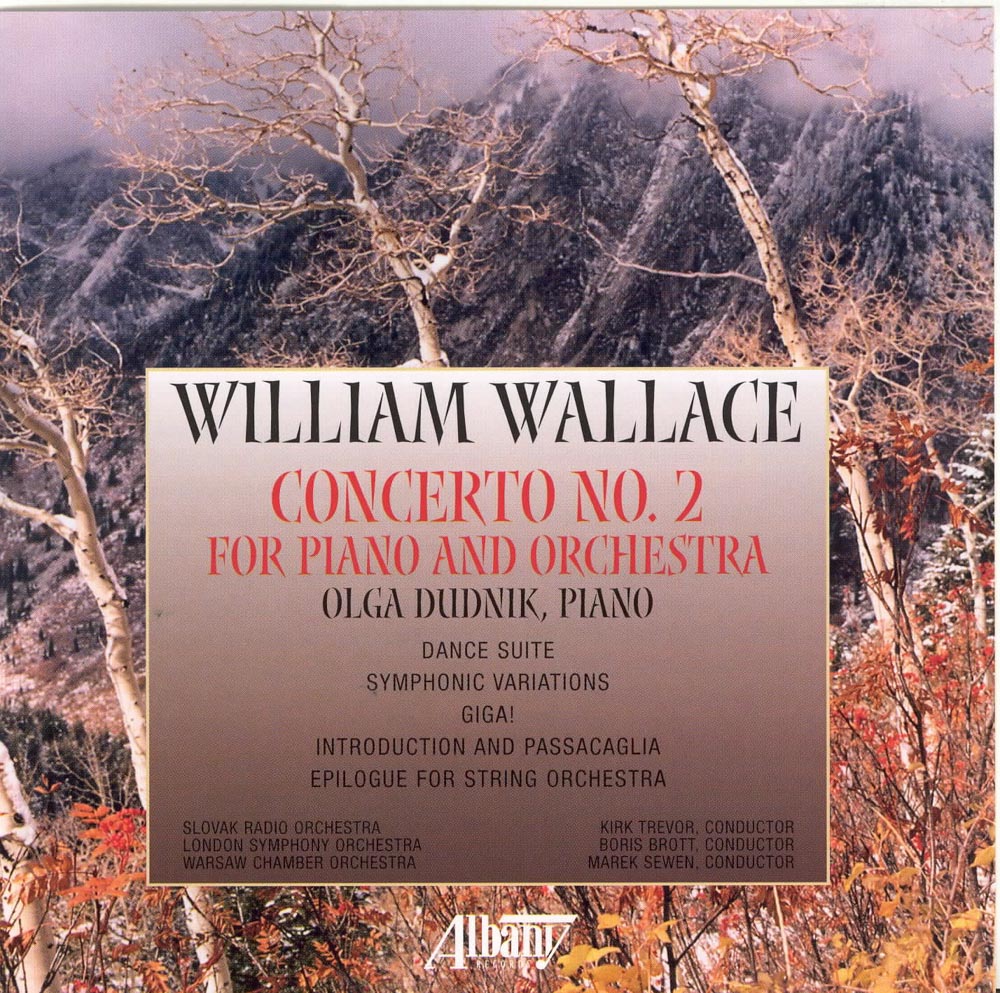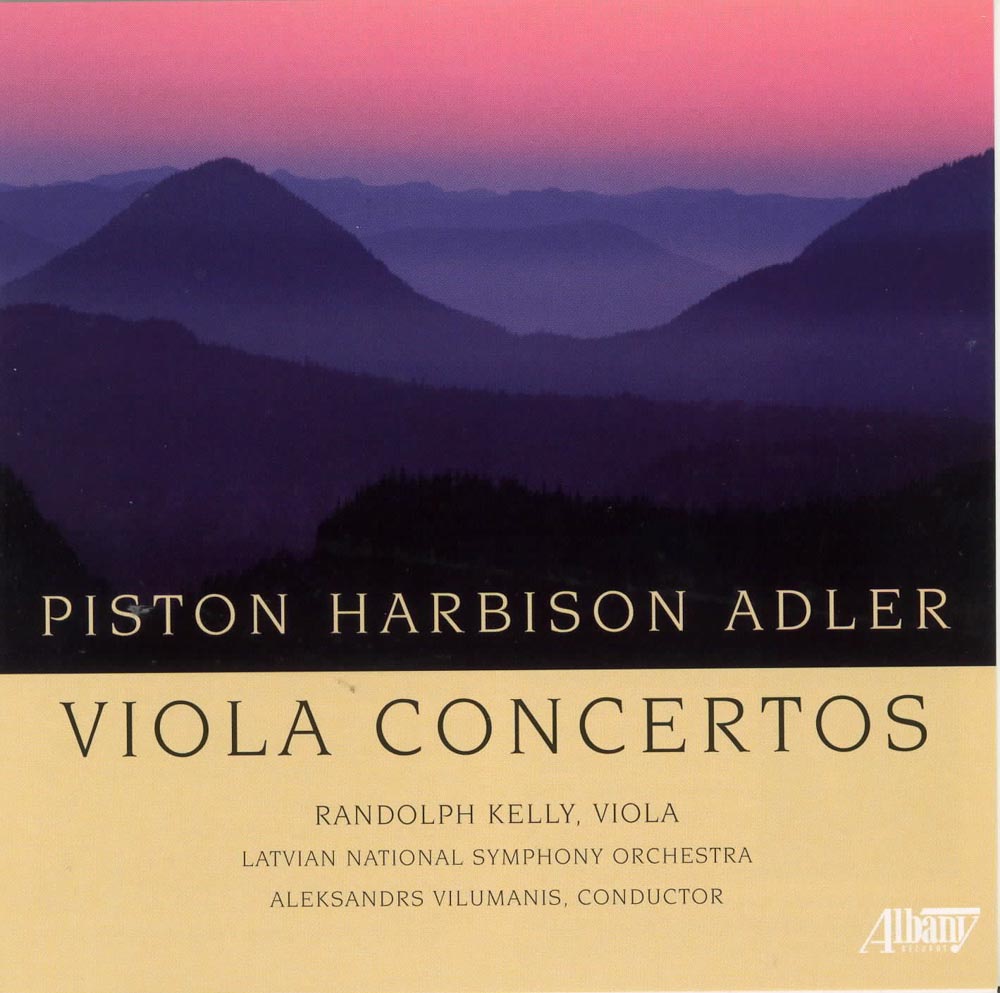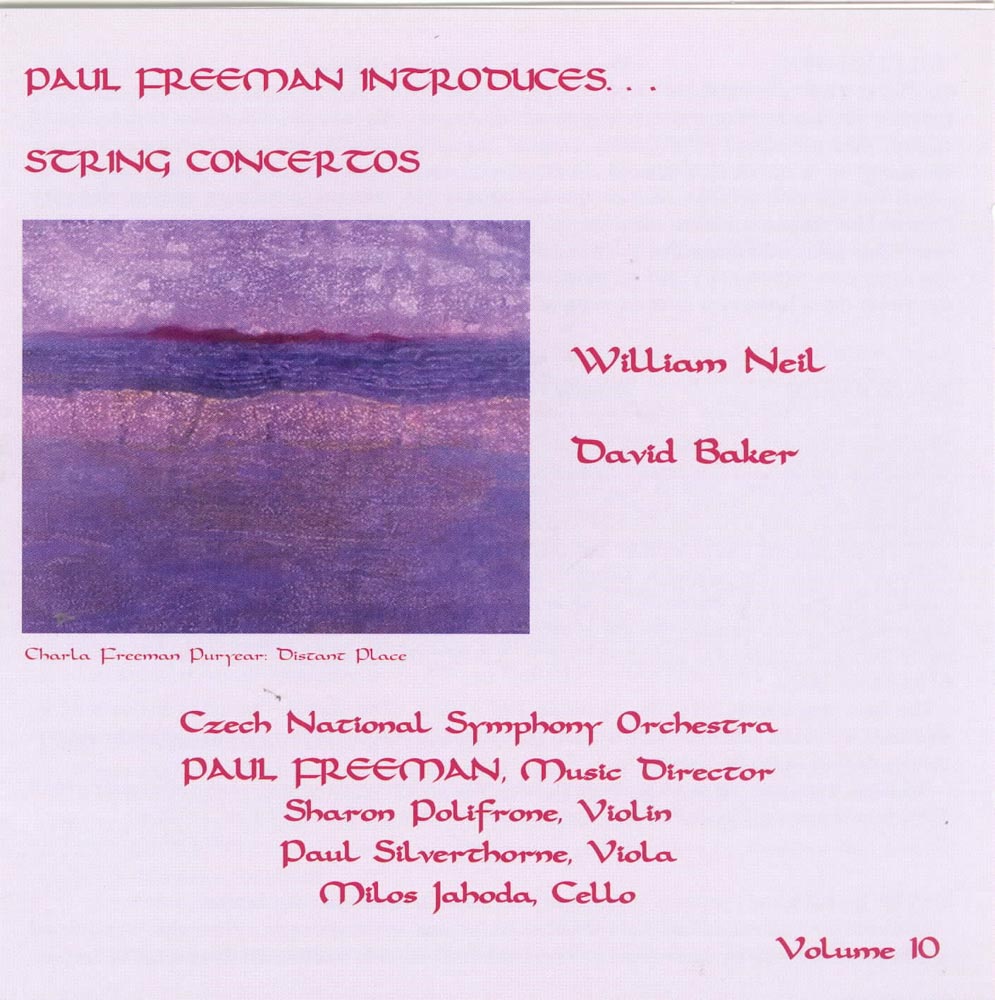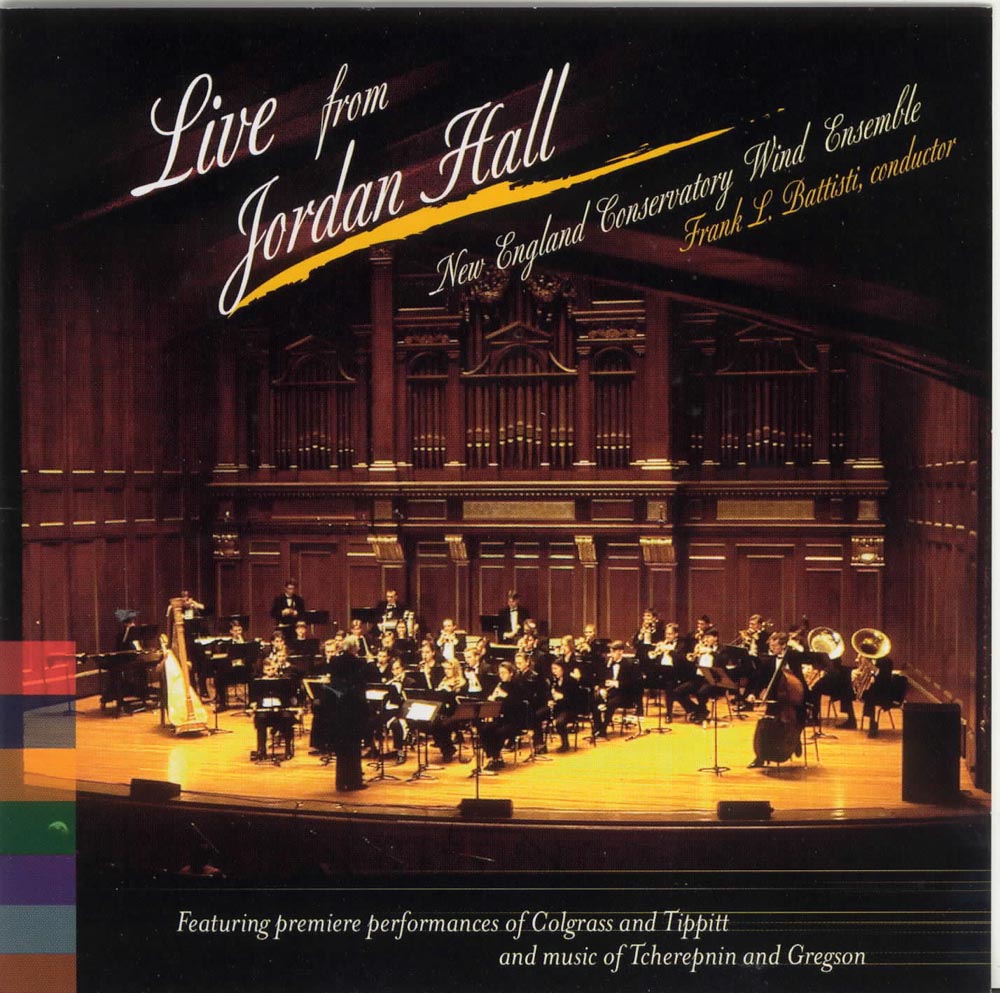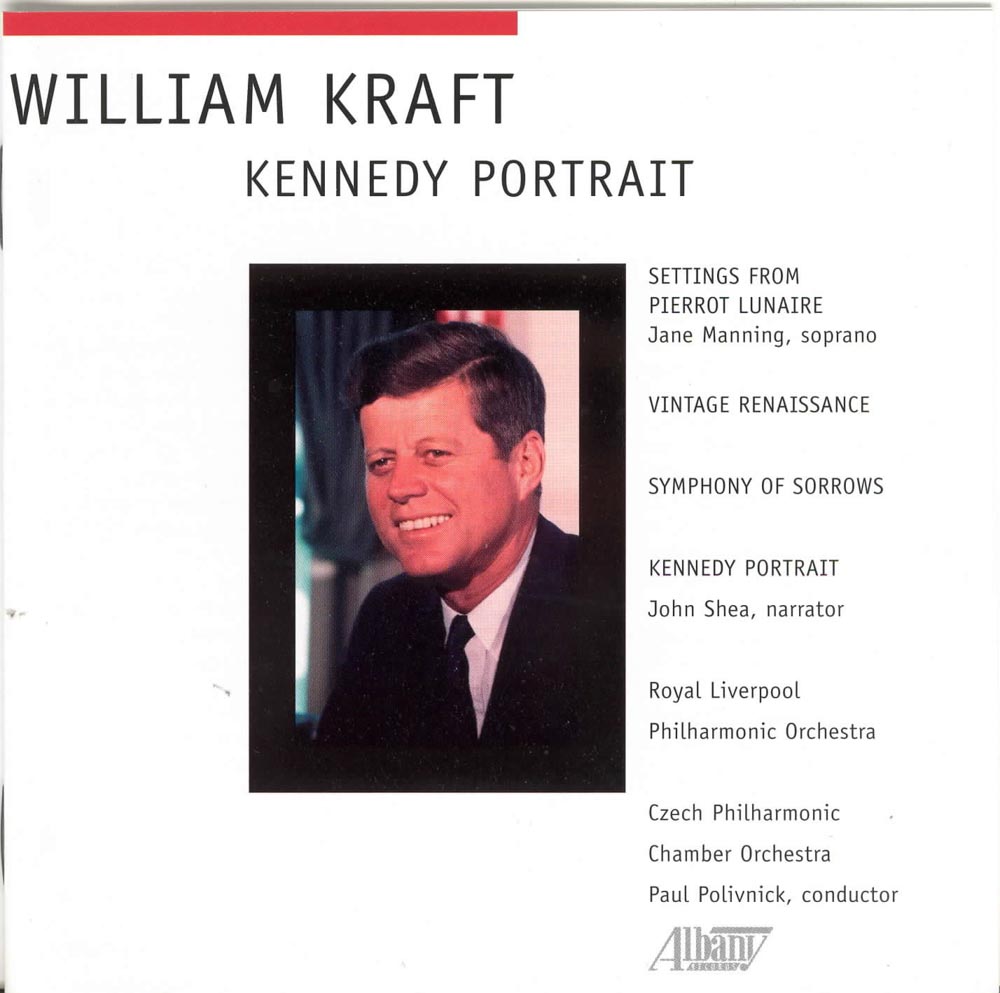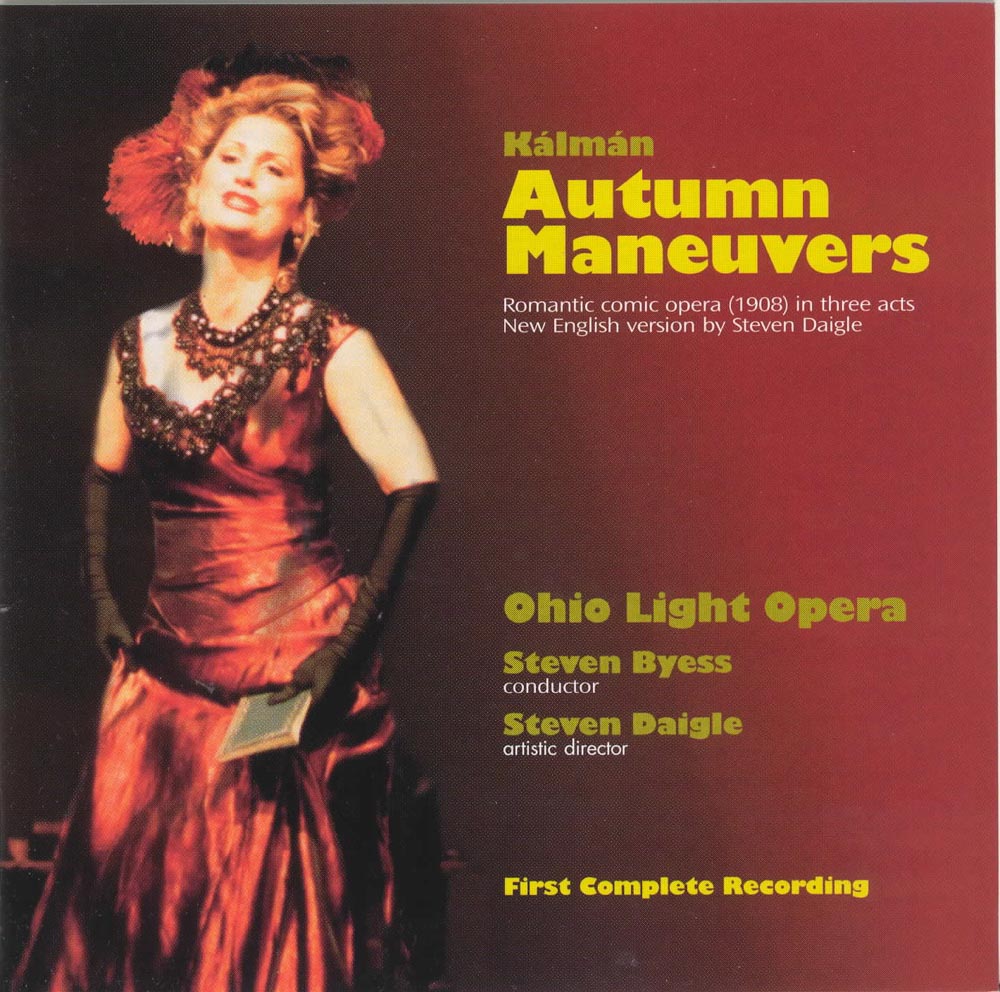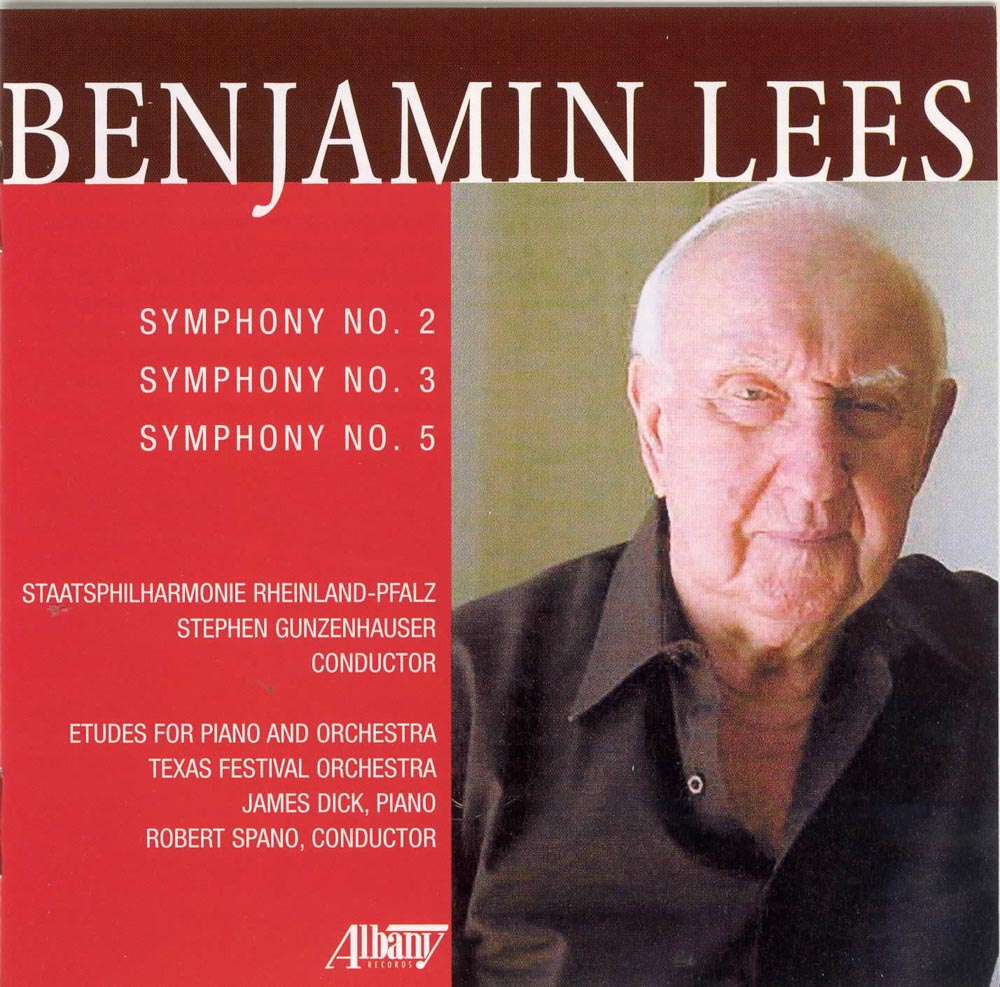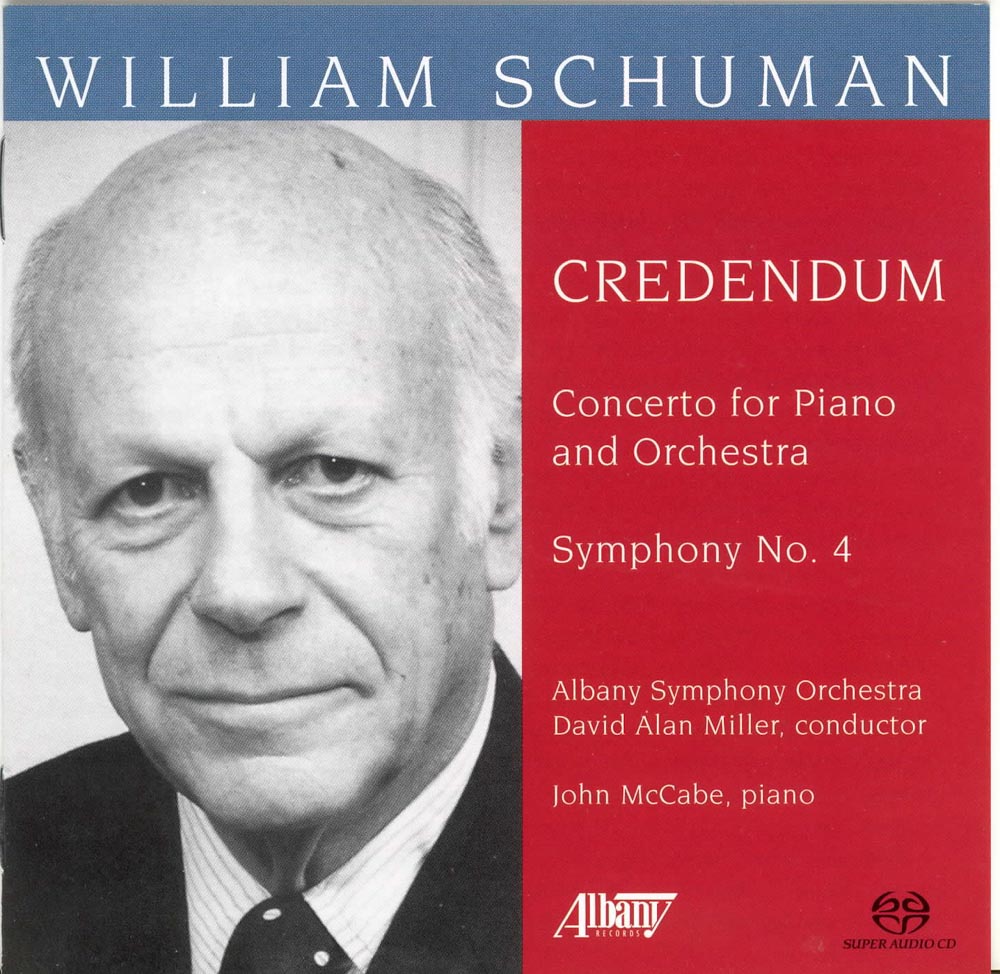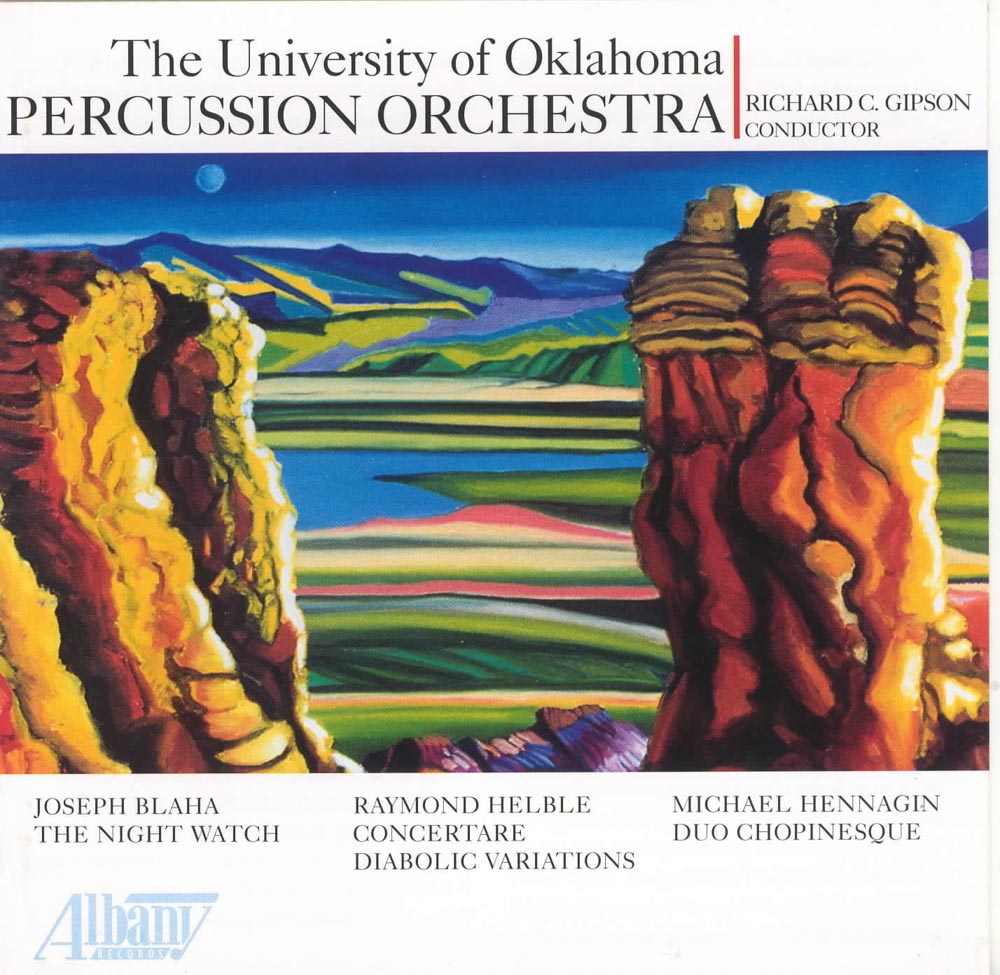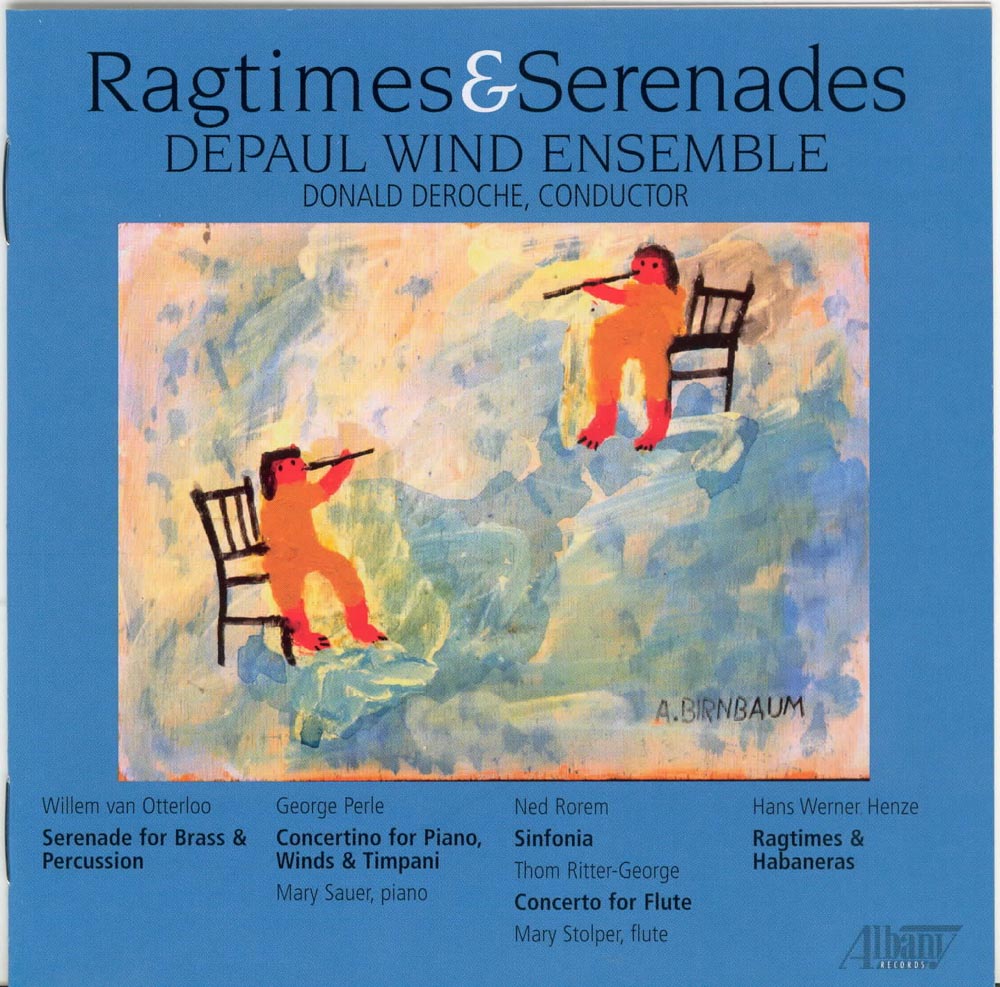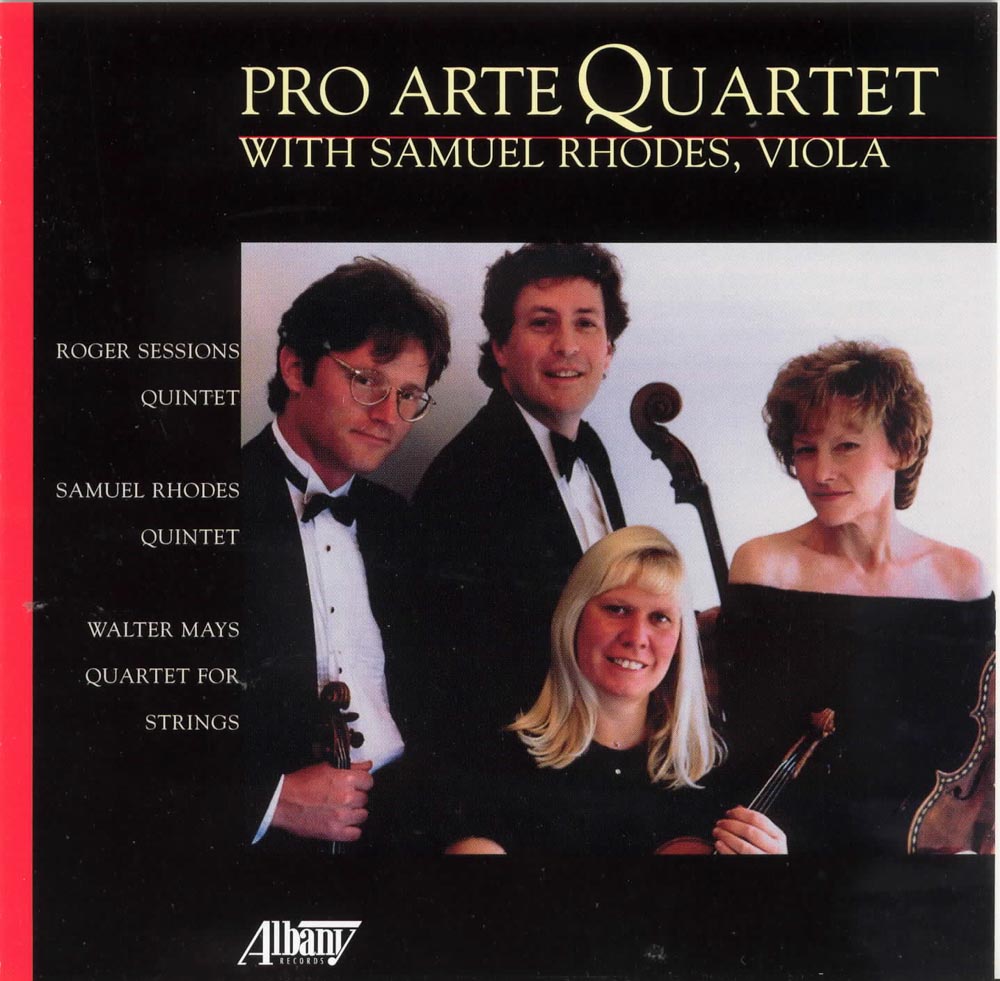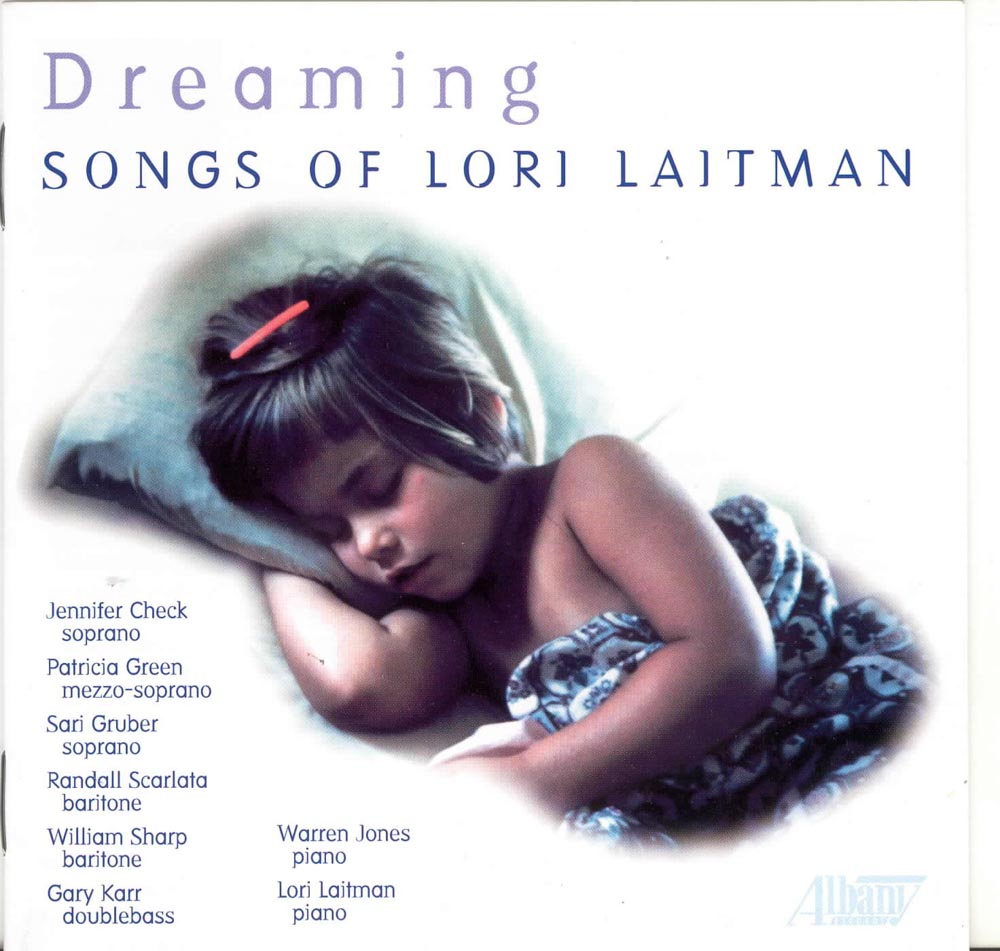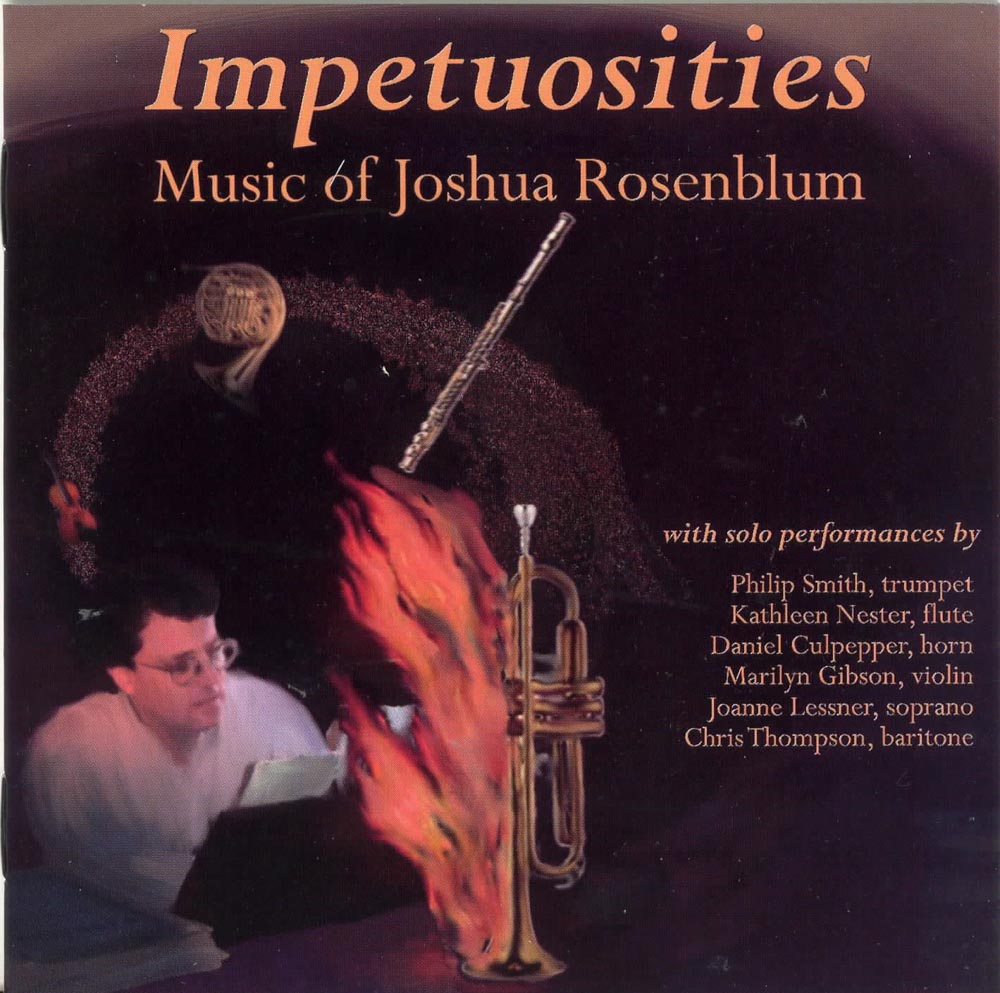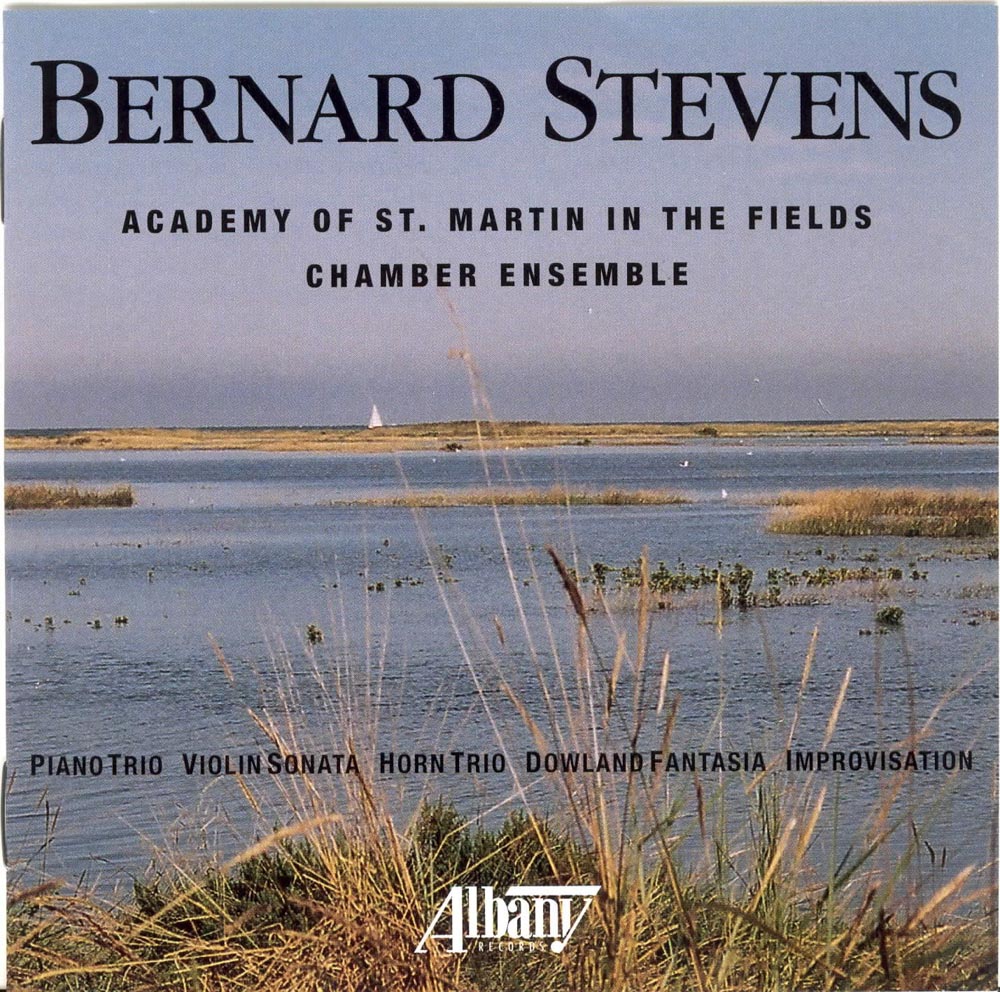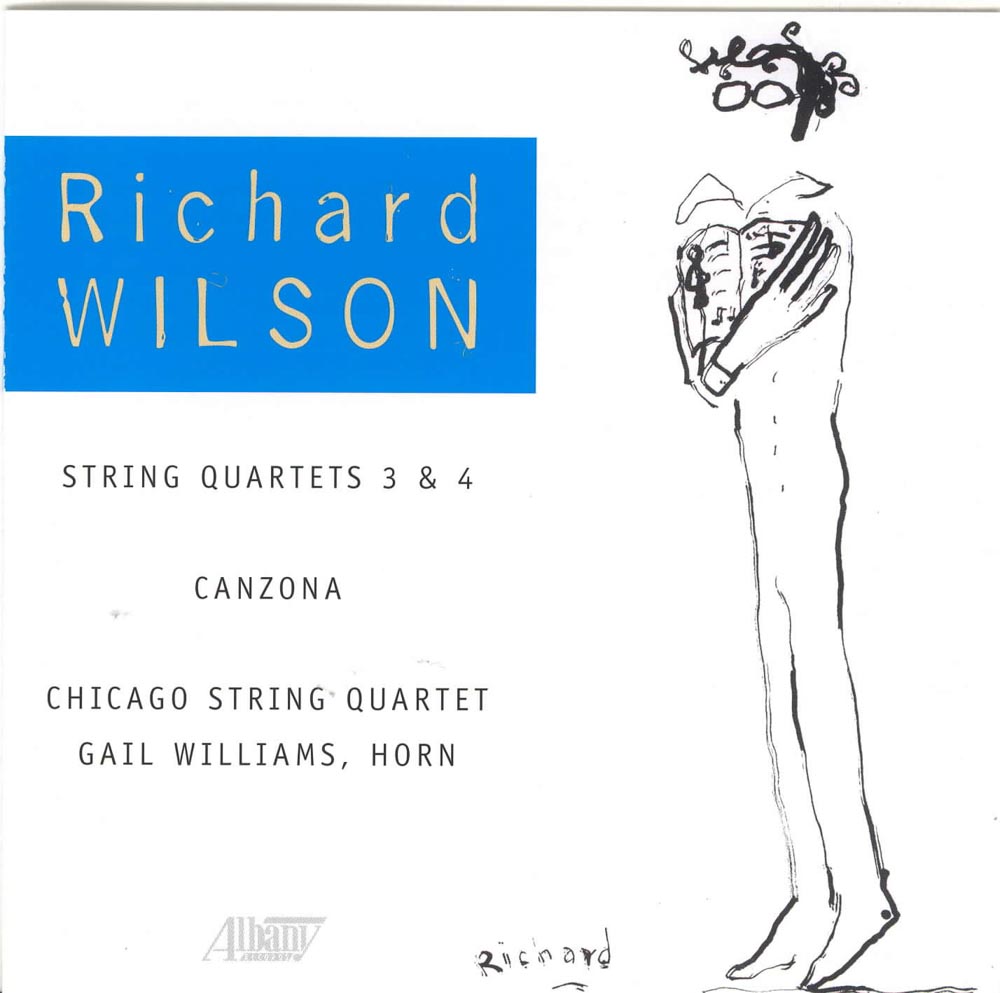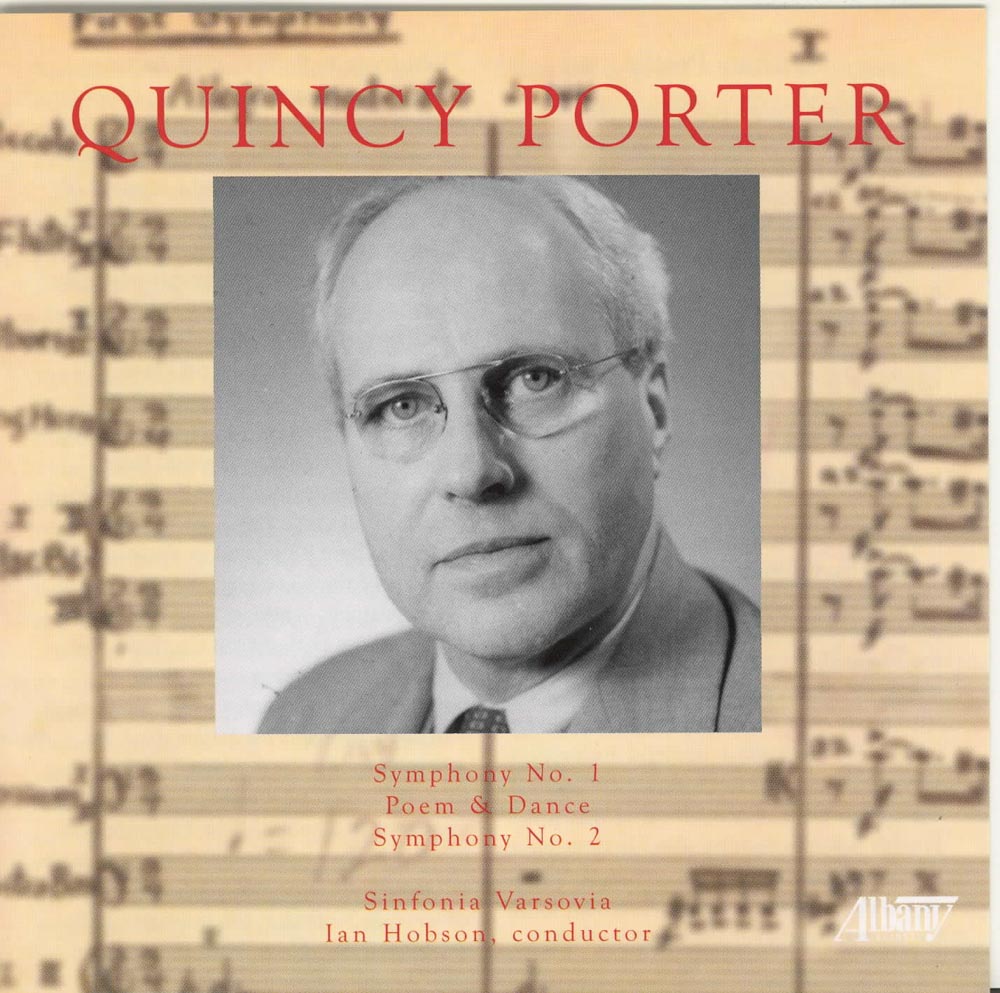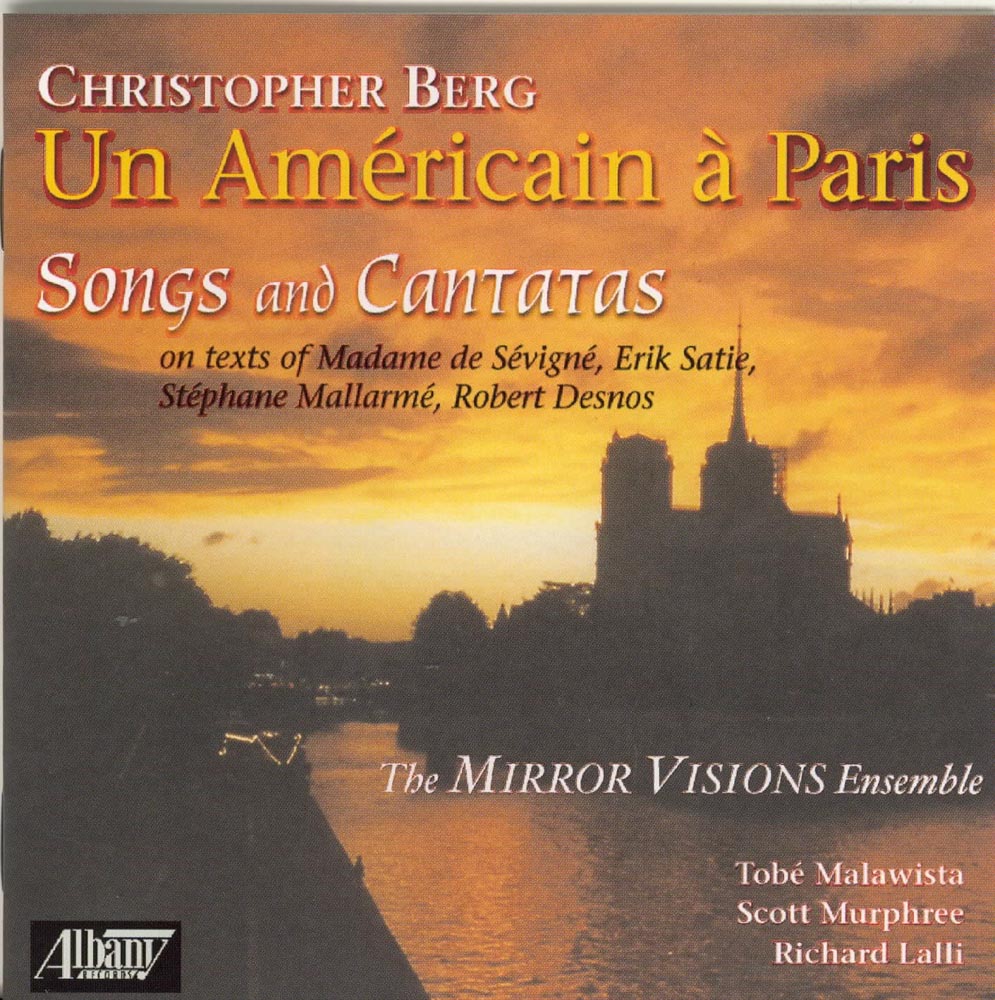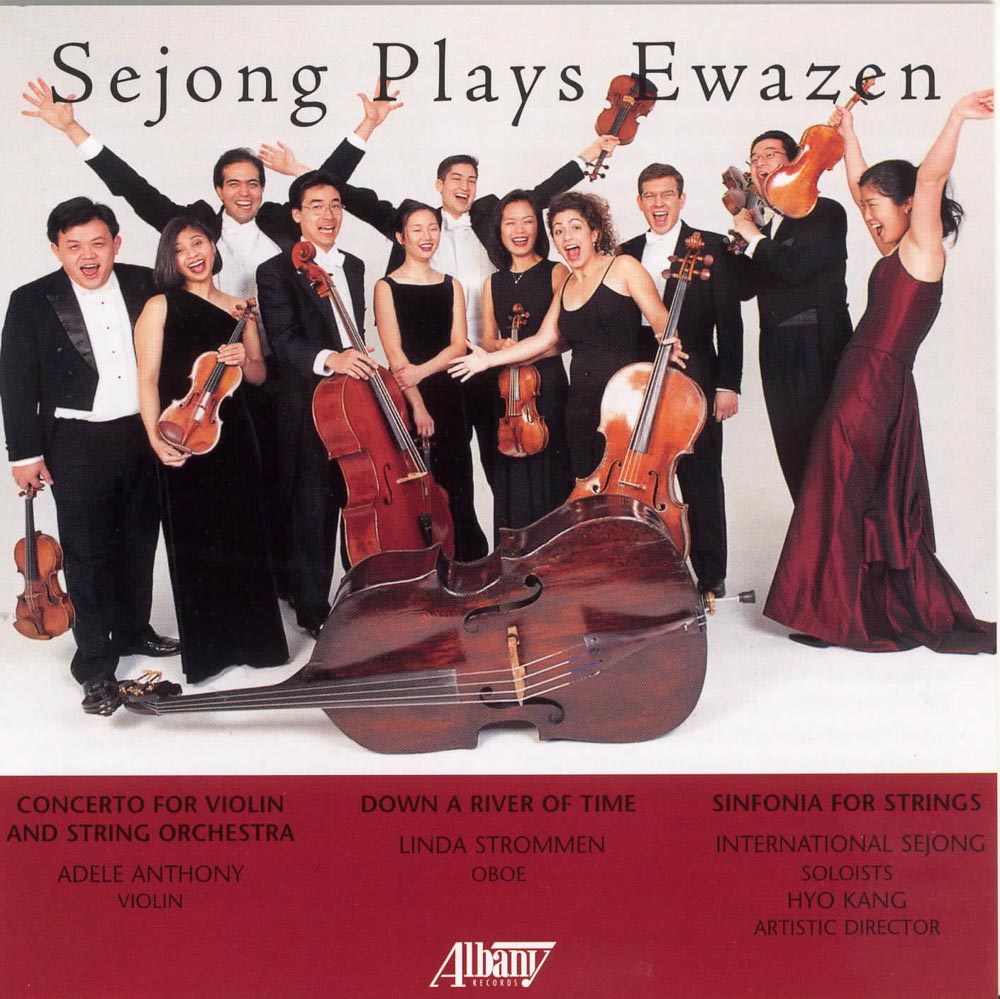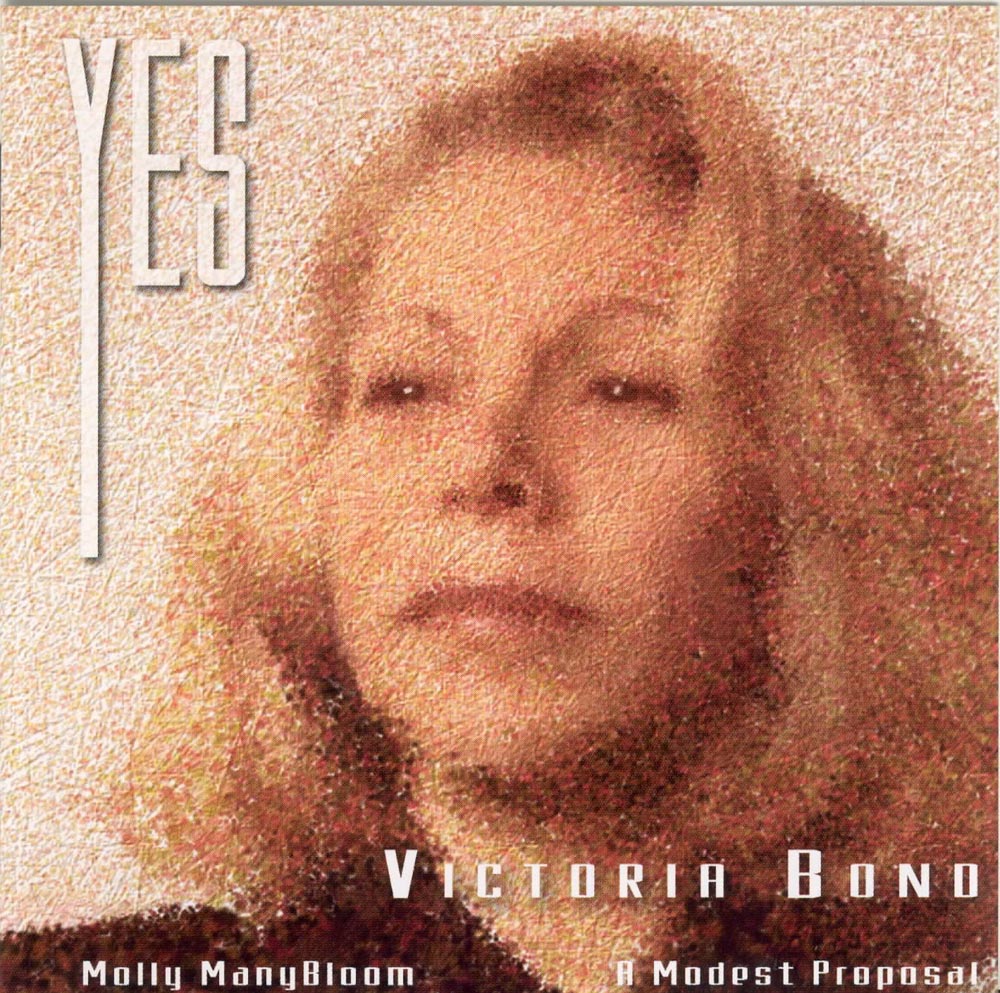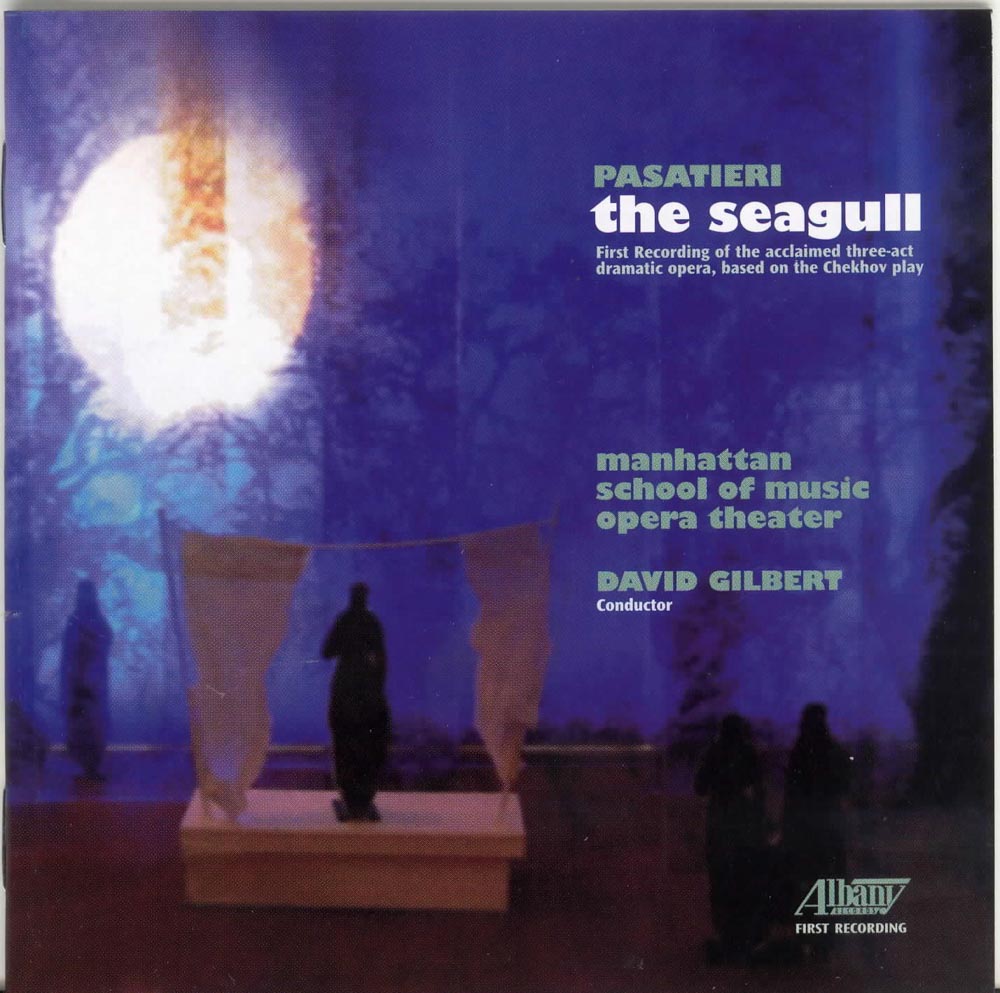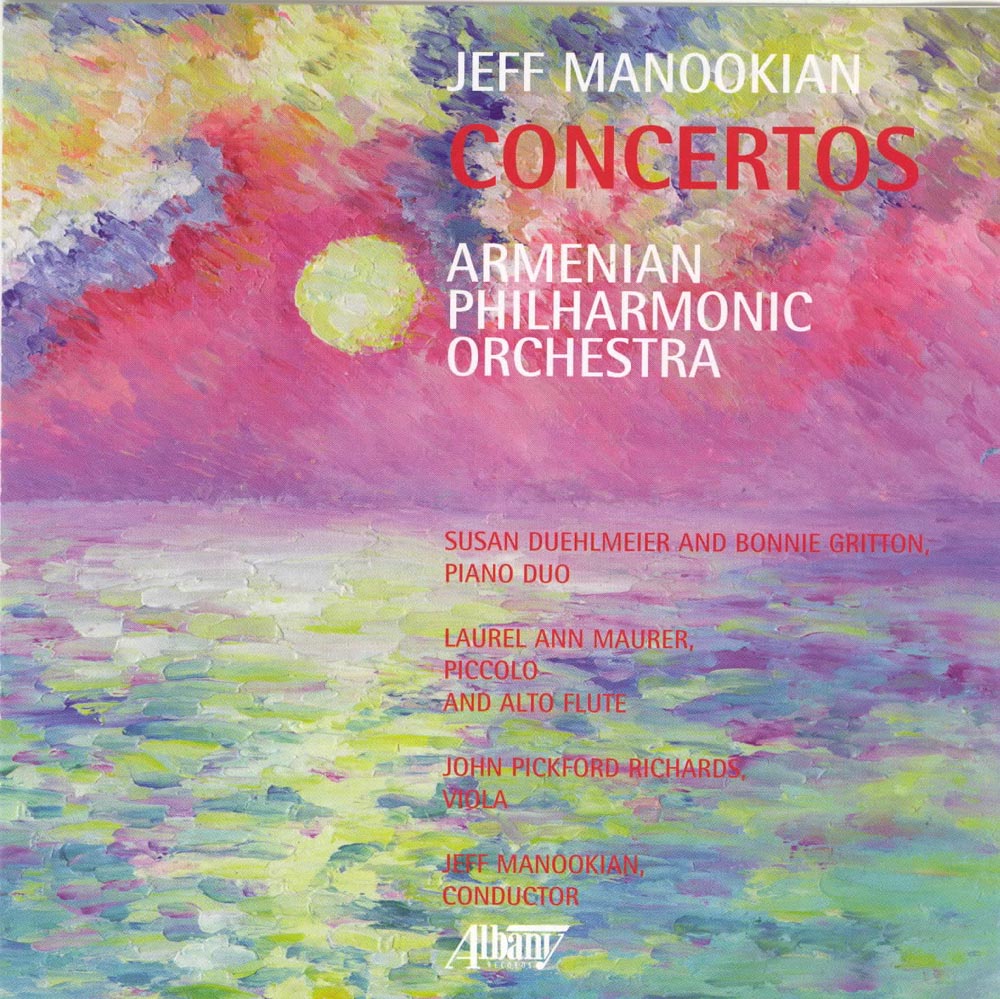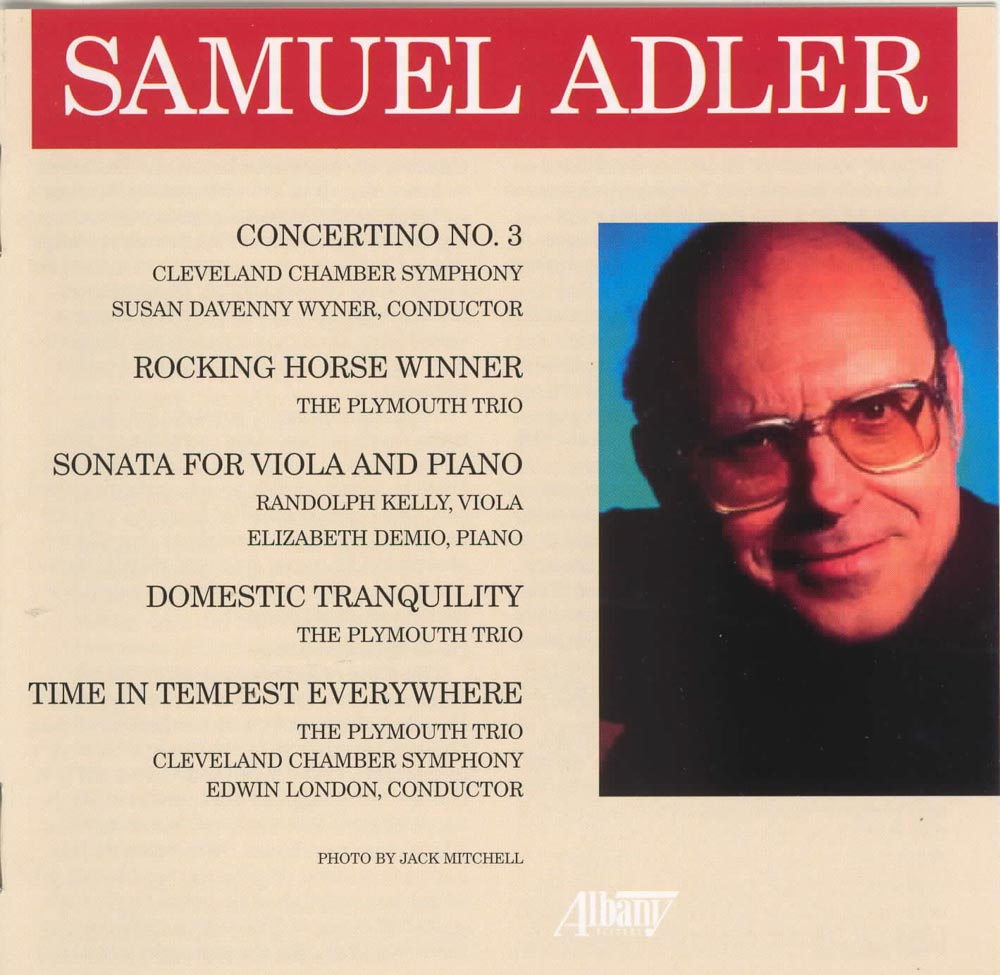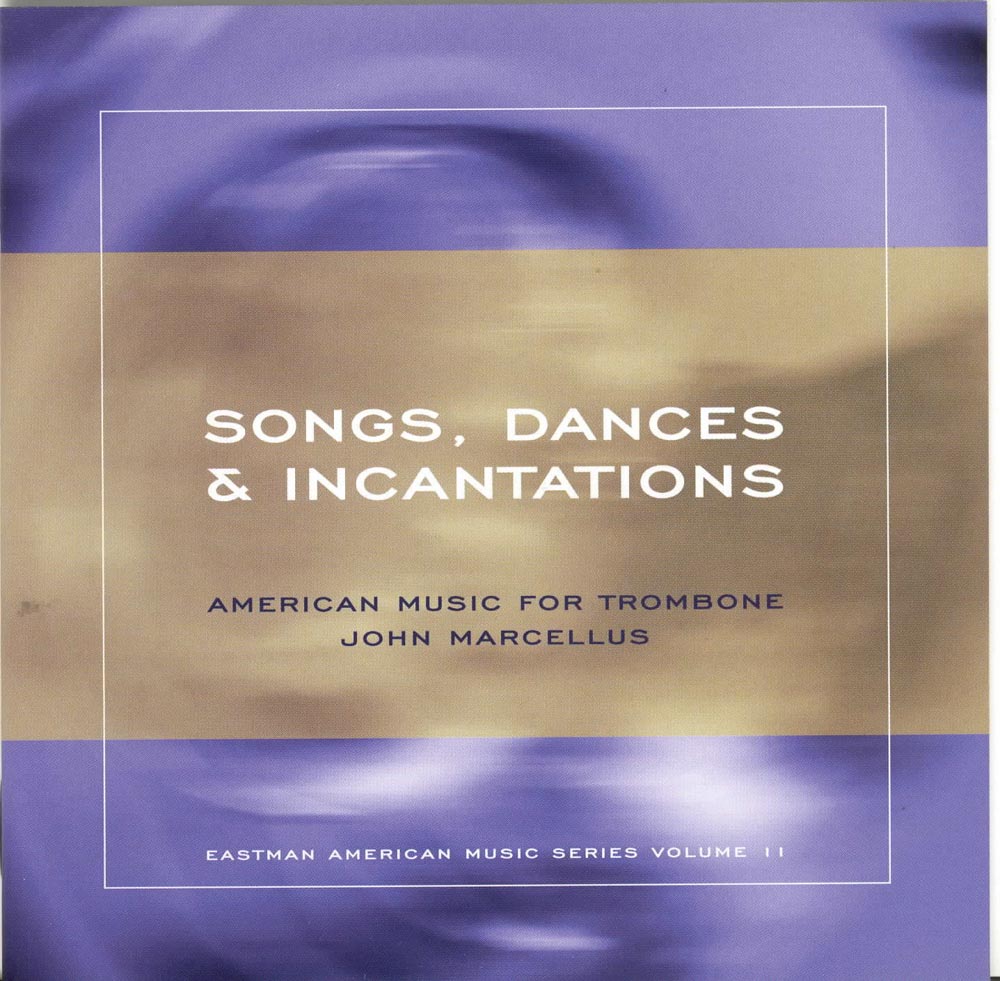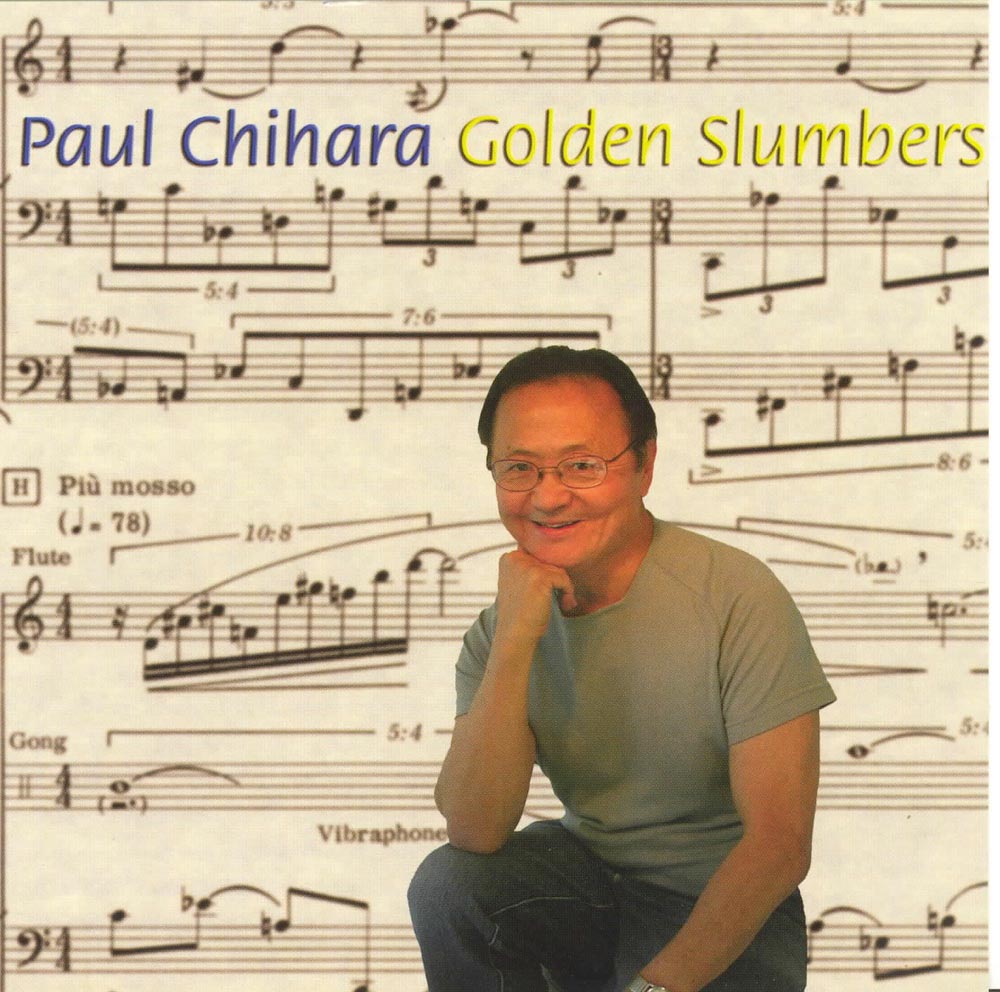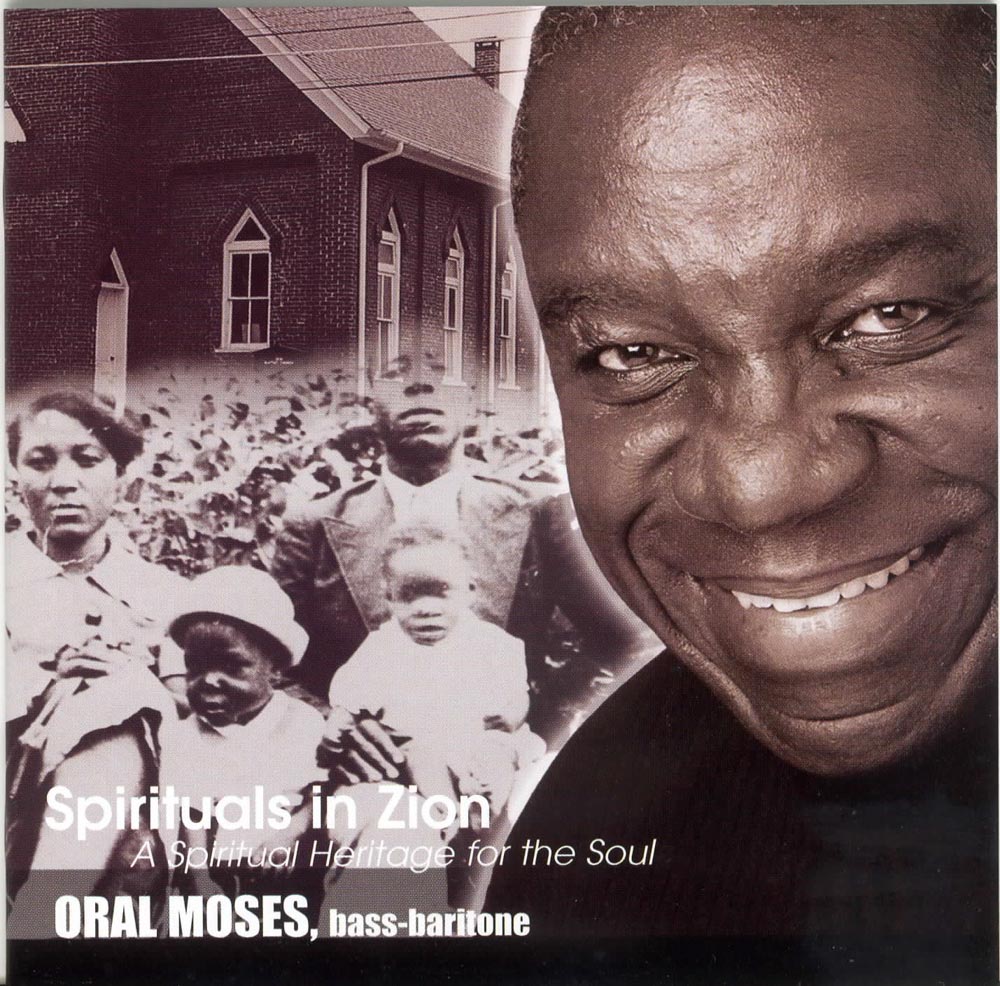Catalog #: TROY0552
Release Date: February 1, 2003ChamberThe sound of Rodney Mack's trumpet has reverberated throughout the world; whether playing baroque piccolo trumpet or interpreting works commissioned especially for him. He was born in New Orleans where he began his musical studies at the age of six. When he was eleven, he began taking classical trumpet lessons with his cousin, Wynton Marsalis. He made his solo debut with the New Orleans Symphony at the age of fifteen. At the age of nineteen, he performed as a soloist with the Boston Pops. Classical concert pianist Karen Walwyn made her New York recital debut at Merkin Hall. The concert was quickly followed by her debut performance on National Public Radio. She has served on the faculties of the School of Music at the University of Michigan in Ann Arbor and at Southwest Missouri State University in Springfield.
Catalog #: TROY0553
Release Date: February 1, 2003ChamberThe composer writes: "Attracted I guess to the Dvorak Sextet and the two by Brahms, I ventured in 1970 to write a Sextet of my own. From the outset, I wanted the added symphonic richness afforded by six parts, but with each of the players having plenty of developmental and contrapuntal linear activity. The Lutheran hymn, Nun Komm der Heiden Heiland stimulated me, much more in the mid-Baroque setting by Praetorius than in the fully-tonal (and thus predictable if better known) J.S. Bach version. I decided to make this tune the crown of the Sextet. My Spanish Songs Besos sin Cuento resulted from two motivations, and it should be admitted from the outset that I have absolutely no knowledge of the Spanish language other than certain culinary terminology. For some time, I was drawn to the remarkable songs in the Sephardic tradition more than 500 years old and my motivation was to find some poetry of this heritage that had not yet been musically set. As I have felt driven to compose songs in as many languages as possible, I have also wanted to write sonatas or concertos for all the standard orchestral instruments. Over many years, I realized I had come fairly close, and decided in the mid 90s to fill in the gaps, at that time clarinet, bassoon, trombone and double bass. As of this writing (2002) only bassoon and double bass remain. The power and nobility of the trombone cannot and should not be denied, and my sonata, therefore, is rather
Catalog #: TROY0554
Release Date: December 1, 2002ChamberPaul Ramsier's doublebass compositions have established the composer as a major figure in the evolution of the instrument. His larger compositions are the most widely performed contemporary works for doublebass and orchestra. These compositions have set new standards for the instrument through more than one hundred fifty performances with orchestras. In the fall of 1999, Ramsier moved from New York City to Sarasota, Florida, where, he says, "I discovered that John Miller, principal bass of the Florida West Coast Symphony, is a world-class soloist of rare gifts." During the summer of 2001, Miller suggested that he and Ramsier make a recording of some of the composer's compositions for doublebass that had not been recorded. Ramsier was initially hesitant to practice the piano again, but Miller and others felt that a composer's participation adds a touchstone for performers - especially when compositions are published - and becomes a historical reference as well. This new CD is the result of this collaboration.
Catalog #: TROY0555
Release Date: December 1, 2002ChamberRecently hailed for her "unparalleled artistry," Julianne Baird, soprano, is "one of the most extraordinary voices in the service of early music." Her busy recital and oratorio schedule includes recent appearances in Lincoln Center, Philadelphia's Academy of Music, Symphony Hall in Chicago, Severence Hall, and the Kennedy Center. James R. Oestreich, in his comprehensive survey of New York's seasonal performances of Handel's Messiah for The New York Times, recently concluded with special praise for Julianne Baird's interpretive skills: "in that respect, Ms. Baird remains the model." Darin Kelly enjoys a reputation as one of the Philadelphia area's foremost soloists in the Baroque repertoire. Stephen Alltop enjoys a busy career performing with modern and period ensembles as a keyboard artist and conductor.
Catalog #: TROY0556
Release Date: February 1, 2003ChamberNancy Galbraith has emerged as one of the present era's most original and influential musical voices. Her distinctive American style employs an exotic array of postmodern and postminimalist elements including lyricism, polyrhythmic and diatonic harmony. Her work has been praised for its energetic combination of melody and rhythm, and its bright orchestral palette. She is currently recognized as a leader in the field of wind ensemble writing. Her compositions for this genre have become standard repertoire for ensembles throughout the United States and appear on many recordings. She is also an accomplished organist and pianist and has composed a number of works for these instruments. She was born in Pittsburgh and educated at Ohio University, West Virginia University, and Carnegie Mellon University, where she presently serves as Professor of Composition and Theory.
Catalog #: TROY0557
Release Date: March 1, 2003OrchestralNot to be confused with the Scottish composer William Wallace (1860-1940), this William Wallace is a man of our time. His works, widely performed and broadcast. He studied with Leroy Robertson at the University of Utah and Egon Wellesz and Edmund Rubbra at the University of Oxford. He has taught at both Rutgers University and Canada's McMaster University. He holds both U.S. and Canadian citizenship and lives in Jackson Hole, Wyoming.
Catalog #: TROY0558
Release Date: February 1, 2003OrchestralNicholas Slonimsky once wrote: "Walter Piston has reached the stardom of the first magnitude. He has not exploded into stellar prominence like a surprising nova, but took his place inconspicuously, without passing through the inevitable stage of musical exhibition or futuristic eccentricity." Here we have the first modern performance of his wonderful Viola Concerto to appear on CD. John Harbison writes about his Viola Concerto: "The viola was my instrument of choice, the one I picked out as a very young concert goer. It had a commanding awkward size, a somewhat veiled, slightly melancholic tone quality, and it seemed always in the middle of things, a good vantage point for a composer (which I already wanted to be). It was frustrating to put up with beginning on the violin and I was told I could switch when my hands got bigger. When it was clear I would never have large hands I insisted on switching anyway and my first summer as a violist was spent in an informal chamber music group playing Haydn Quartets. That summer in Princeton, New Jersey, I remember as my happiest, the company of my friend John Sessions in the quartet, the wonder of the music we were exploring and the possibilities of the instrument I had always wanted to play. When it came to writing a concerto for viola I wrote a piece for the violist I never was, the true soloist, and the instrumental timbres I felt to be most typical of the instrument, its tenor voice, rather than its rather unnatural treble." Sam Adler writes: "The Concerto for Viola and Orchestra was begun in December 1998 and completed in February 1999 on a commission from the Pittsburgh Symphony Orchestra for its principal violist Randolph Kelly. This is the tenth concerto I have composed. The viola has a very special significance in my life since it was my major performing instrument in both chamber music situations as well as in the orchestra. To me, the major attribute of the viola is its ability to convey a most beautiful lyricism." More information on Randolph Kelly can be found at his website: www.randolphkelly.com.
Catalog #: TROY0559
Release Date: March 1, 2003OrchestralAbout his Rhapsody for Violin and Orchestra William Neil writes: "In ancient Greece a "rhapsod" was a singer of epic poems and bits and pieces of tales strung together making a collage of entertainment. I have, in a like manner, allowed a simple line of melody, first introduced by the violin, to speak a musical tale. The violin, full of exuberance and the energy of youth, threads through the story's themes and shadow themes, weaving a mosaic of sound through every episode." David Baker, Distinguished Professor of Music and Chairman of the Jazz Department at the Indiana University School of Music, is an award-winning performer/composer/educator who has taught and performed all over the world. "Of the 20 concerti I have written, my Concert Piece for Viola and Orchestra is arguably the most ambitious. It is one of the most virtuosic, involves the largest orchestra, is the grandest in terms of emotional sweep, and is very much in the tradition of the major string concerti of the Romantic Era. Unlike most of my works, this concerto shows virtually no hint of a conscious jazz influence; my references are more obviously Bartok, Tchaikovsky, and Shostakovich. It is very much reminiscent of the tune-filled works of an earlier time." It was premiered on February 25, 1991 at Indiana University by violist Karen Elaine Bakunin. Baker's Concerto for Cello and Chamber Orchestra was written in the spring of 1975 and was premiered in March of that year by Janos Starker for whom the work was written and to whom it is dedicated. The concerto has three movements, configured in the traditional format: Fast - Slow - Fast. The instrumentation is somewhat unusual in that there are no cellos in the orchestral accompaniment.
Catalog #: TROY0560
Release Date: March 1, 2003Wind EnsembleTippett's Praeludium was commissioned for the 40th anniversary of the BBC, in 1962. It was first performed on November 14 that year, at a concert in the Royal Festival Hall, given by the BBC Symphony Orchestra and Antal Dorati. This work was composed during the time Tippett composed his opera King Priam. Tippett's work Triumph has the full title Triumph: A Paraphrase of "The Mask of Time" and was composed in conjunction with The Mask of Time. Its 6th movement is titled "The Triumph of Life," a grotesque vision of the "triumphal" progress of a chariot throwing bodies off in all directions: this is complemented by the depiction of Shelley's own death, drowning at sea in an attempted defiance of a storm; and the movement ends with the burning of the body of the poet (a legal requirement of the period) though legend has it, the heart would not burn. Triumph evokes this episode. The Concerto for Two Continents for Synthesizer and Wind Orchestra is Ivan Tcherepnin's fourth commissioned work for the American Wind Symphony. It was premiered in Vaasa, Finland with the composer as soloist on the synthesizer. The concerto can be heard as a joyful celebration of the power of music to cross borders and bring peoples together through a commonly shared world of tones and rhythms. Michael Colgrass' the Winds of Nagual is based on the writings of Carlos Castaneda about his 14-year apprenticeship with Juan Mattise, a Yaqui Indian sorcerer from northwestern Mexico.. Castaneda met Don Juan while researching hallucinogenic plants for his master's thesis in anthropology at UCLA. Juan becomes Castaneda's mentor and trains him in Pre-Columbian techniques of sorcery, the overall purpose of which is to find the creative self- what Juan calls the "Nagual."
Catalog #: TROY0561
Release Date: May 1, 2003OrchestralSettings from Pierrot Lunaire (1987-90) was commissioned by the Arnold Schoenberg Institute in honor of the 75th anniversary of Schoenberg's Pierrot Lunaire (1912). In connection with a conference at the Arnold Schoenberg Institute to celebrate the 75th anniversary, Leonard Stein, the director of the Institute conceived a project that would provide a more lasting commemoration: "The commissioning of musical settings of the other 29 poems of the Pierrot cycle not included in the original 21 of Schoenberg's work." The performing ensemble would be the same. The orchestration of Settings from Pierrot Lunaire took place over a period of five years, 1990-94. The work was recorded for this CD on October 21, 2001. Vintage Renaissance (1989) was first performed on June 10, 1989 by the Boston Pops with John Williams conducting. In the 1980s, the Boston Pops Orchestra started on a project of commissioning new works as well as special arrangements from Broadway, film and the popular music world. Among those serious composers commissioned to write new works were Peter Maxwell Davies, Oliver Knussen, Joseph Schwantner, John Adams and William Kraft. The Symphony of Sorrows was given its first performance by Gerard Schwartz and the Seattle Symphony in 1995. A Kennedy Portrait (Contextures III) was commissioned by the Boston Philharmonic Orchestra to commemorate the 25th anniversary of the death of President Kennedy. Its conductor, Ben Zander was the person who commissioned the work and gave it its first performance on November 19, 1988.
Catalog #: TROY0562-63
Release Date: January 1, 2003OperaThe Ohio Light Opera production of Autumn Maneuvers in the summer of 2002, was the first time the work was produced in its entirety in the United States. In 1912, the Viennese music critic Richard Specht wrote of the premiere of Kalman's opera Der Zigeunerprimas: "Kalman's music is fresh and pleasant, full of strength in its natural melodic invention and of wholesome maturity. While others grope and experiment, he stands in the rich soil of folk music and hits the mark every time." Autumn Maneuvers was written three years before Der Zigeunerprimas, but was already rich in folk elements, specifically those of Kalman's native Hungary. These are not the same fundamental folk elements used collected by Bartok and Kodaly with whom he was a fellow student at the Budapest Academy of Music. Rather, the melodic materials used by Kalman are polished and elegant, similar to those of another fellow Hungarian Franz Liszt. Kalman also shows his great skills as an orchestrator in Autumn Maneuvers. Similarities to Tchaikovsky, who was a model for the composer, abound in the score. It is clear that the 26 year-old Kalman had found a formula for success in the excellence of Autumn Maneuvers Ð essentially his first major work for the stage. This is Autumn Maneuvers' first complete CD recording.
Catalog #: TROY0564-65
Release Date: February 1, 2003OrchestralBenjamin Lees spent his early years in San Francisco, moving to Los Angeles with his family in 1939. He attended the University of Southern California after military service in World War II and later began four years of intensive private study with George Antheil. Following a Fromm Foundation Award in 1953 and his first Guggenheim Fellowship in 1954, the composer and his wife left for Europe where they remained for seven years. Lees returned to the U.S. in 1962, joining the faculty of the Peabody Conservatory as the W. Alton Jones Professor of Composition. He also taught composition at Queens College, the Manhattan School of Music, and the Juilliard School. His Symphony No. 2 was given its world premiere on December 3, 1958 by the Louisville Orchestra, Robert Whitney conducting. Sixten Ehrling conducted the world premiere of the Third Symphony on January 16, 1969. Both these symphonies appeared in the original Louisville Orchestra subscription series of recordings. They receive here their first modern digital recordings. The premiere of the Symphony No. 5 took place on March 29, 1998 with the Delaware Symphony Orchestra conducted by Stephen Gunzenhauser. The Etudes for Piano and Orchestra were first performed by the Houston Symphony Orchestra with Lawrence Foster conducting. They are dedicated to the pianist who performs them here, James Dick.
Catalog #: TROY0566
Release Date: March 1, 2003OrchestralThose of you who know your English composers; yes, indeed, it is John McCabe who is the piano soloist in the Schuman Piano Concerto. In fact, it was John who recommended that the Orchestra perform the piece in the first place. In the new SACD format, this is a great demonstration disc to show just how good the modern orchestra can sound. Here, Credendum appears for the first time ever in stereo in any format. It is one of the loudest pieces of music ever written. The work takes its name from the Latin for "that which must be believed." It was commissioned through the Department of State (the first time a government agency had ever commissioned a piece of music) to honor UNESCO, the United Nations organization in charge of coordinating arts, science and education programs worldwide. It was premiered by the Cincinnati Symphony Orchestra, Thor Johnson conducting, on November 4, 1955, in a special concert honoring the Fifth National Conference of the United States National Commission for UNESCO. The Concerto for Piano and Orchestra was originally derived from an unperformed concerto fashioned in 1938-39 and was called Concerto for Piano and Small Orchestra. It exists in an altogether other universe from the sweeping concertos of Brahms, Grieg and Tchaikovsky. Which may clarify why one disgruntled listener, in Manhattan's Town Hall on January 13, 1943, demanded that Daniel Saidenberg - who had just led the Saidenberg Little Symphony and pianist Rosalyn Tureck in the premiere performance - explain himself. "You conduct modern music," the young woman said. "Why?" William Schuman considered himself first and foremost a symphonist, and his Fourth Symphony dates from his period of greatest industry in that form, during and shortly after World War Two. (To his regret, physical disabilities disqualified him from military service). The Third arrived in late 1941, the Fourth a few months later, the Symphony for Strings (No. 5) in late 1942 and the masterful Sixth in 1948. Aaron Copland heard a performance of this symphony in the early 80s at Tanglewood and phoned Schuman to rave about the piece, calling it "wonderful" and claiming to have been wholly unfamiliar with it. On the contrary - Schuman reminded him - not only had Copland already read through the score but Schuman had even revised the end of the second movement based on the senior composer's comments. But then, that had been four decades prior: the symphony was premiered by the Cleveland Orchestra under Artur Rodzinski (to whom it was dedicated) on January 22, 1942 - a few scant weeks after the attack on Pearl Harbor.
Catalog #: TROY0567
Release Date: March 1, 2003ChamberJoseph Blaha is currently assistant professor of music and director of bands at Roanoke College in Salem, Virginia. In 1983, he enrolled as a doctoral student in composition at the University of Oklahoma and studied with Michael Hennagin earning a DMA in 1991. Raymond Helble, a native New Yorker, studied at the Eastman School of Music with Sam Adler, Wayne Barlow and Joseph Schwantner. A highly polished finish, elaborate motivic development, contrapuntal dexterity, and a concentrated intensity of expression, mark Helble's work, whether he uses tonal, serial, modal, or atonal materials to fashion his work. Born in The Dalles, Oregon, Michael Hennagin composed in virtually every medium including music for film, television, and stage. His broad repertoire includes instrumental and vocal solos, various chamber ensembles, symphonic band, orchestra, and a large body of choral music for which he is widely recognized. He joined the faculty of the University of Oklahoma in 1972 and retired in 1992 to devote full time to his active composing schedule. He died suddenly in June 1993.
Catalog #: TROY0568
Release Date: April 1, 2003Wind EnsembleThe Dutch composer, Willem van Otterloo, composed his Serenade in 1944. It is in a post romantic style and runs the gamut from charming to brilliant to reflective. It is loosely based on the wind serenades of the 18th and 19th centuries and consists of four movements - March, Nocturne, Scherzo and Hymn. As the titles suggest, this music is meant to be accessible to the listener and appropriate for concert as well as occasional performances. George Perle has been celebrated as both a composer and theorist of extraordinary accomplishments. He is a favorite son of the DePaul School of Music, where he earned his BA in 1938. The Concertino for Piano, Winds and Timpani was composed between September 24, 1978 and February 20, 1979, on a commission from the Fromm Music Foundation. It was premiered in Chicago in April 1979 with Ralph Shapey conducting. Ned Rorem's Sinfonia was written as the first commission for the American Wind Symphony Orchestra and its conductor, Robert Boudreau. It is cast in four brief sections, two of which are lyrical and reflective, and two of which are full of energy. The work is short, but possesses both wit and charm. Thom Ritter-George grew up in Detroit, Michigan. Today he is a Professor of Music in Idaho State University's Department of Music. His Concerto for Flute was written in early 1966 on commission from the music publisher, P. Litchard Toland. Mr. Toland requested two special features for the new work. The first was that the solo part should be written with optional scoring for piccolo in certain passages. The second was that there should be three versions of the accompaniment - orchestra, piano and wind ensemble. In his role as Orchestra Librarian for the Eastman School of Music, Mr. Toland had seen many situations where accompaniment alternatives were needed. Hans Werner Henze's Ragtimes and Habaneras was originally written for brass band and was re-scored for wind orchestra by his pupil Marcel Wengler. The work consists of eleven short dance movements reminiscent of ragtime dances like the Charleston and the Foxtrot, and Latin American dances such as the tango, Son and Rumba. The final movement is a kind of cross between a ragtime and a march. While the harmonic materials are modern and each form a kind of short parody, the music is full of humor and fun.
Catalog #: TROY0569
Release Date: May 1, 2003ChamberAcclaimed by the San Francisco Chronicle as "one of the great quartets of our times," the Pro Arte Quartet has enjoyed a long and distinguished career as one of the most enduring string quartets in existence. Founded in Brussels in 1912 by violinist Alphonse Annou and violist Germain Prevost, the Pro Arte became the court quartet to Queen Elisabeth of Belgium. Its world reputation soared with a European tour in 1919, earning the group such outstanding acclaim that many composers - including Bartok, Milhaud, and Honegger - composed new works for the Pro Arte. In 1940, stranded in the United States by the outbreak of World War II, the University of Wisconsin-Madison offered the Quartet the position of Artist-in-Residence, which continues to the present day. Current members, David Perry and Suzanne Beia, violins, Sally Chisholm, viola, and Parry Karp, cello, have continued the Pro Arte legacy. The guest artist on this CD, Samuel Rhodes, has been a member of both the Juilliard String Quartet and the faculty of the Juilliard School since 1969. His Quartet was written while he was studying for his Master of Fine Arts degree at Princeton (with Roger Sessions) shortly before he joined the Juilliard String Quartet. Sessions's influence is very much felt in the piece, especially in the first movement.
Catalog #: TROY0570
Release Date: May 1, 2003VocalLori Laitman is an art song composer whose works are performed widely in the United States and abroad. She has served as composer-in-residence at Georgia Southern University in Statesboro and Dickinson College in Carlisle, Pennsylvania; and as guest artist at The Grandin Festival (associated with the Cincinnati Conservatory of Music). Lori Laitman was graduated magna cum laude with honors in music from Yale College. She received her M.M. in flute performance from the Yale School of Music. Her principal composition teachers were Jonathan Kramer and Frank Lewin. Her initial focus was composing music for film and theater and in 1980, she wrote the score for The Taming of the Shrew for the Folger Theater in Washington. Since 1991, she has concentrated on composing for the voice.
Catalog #: TROY0571
Release Date: April 1, 2003ChamberJoshua Rosenblum is a composer, pianist and conductor. He is a graduate of Yale College and the Yale School of Music. He is the composer and co-lyricist of the cult hit musical Fermat's Last Tango, which enjoyed a successful Off-Broadway run at the York Theater, as well as the forthcoming musical Einstein's Dreams, based on the best-selling novel by Alan Lightman. Equally comfortable in the contemporary classical idiom, he has written numerous commissions and has received awards from ASCAP and Meet the Composer. His choral setting of "Jabberwocky" won the Ithaca College Choral Composition Contest, out of 200 entries nationwide. Rosenblum has conducted ten Broadway and Off-Broadway shows, including Miss Saigon, The Music Man, Anything Goes and Falsettos. He has appeared as pianist with the New York Pops and the American Symphony Orchestra. He is also highly sought after as an exponent of experimental, innovative, and unusual works of new music theater. He is also a music journalist who has written articles for Newsday, Stagebill and reviews for Opera News.
Catalog #: TROY0572
Release Date: August 1, 2003ChamberBernard Stevens was born in London and studied at Cambridge and the Royal College of Music in London, where he gained the highest awards. After his army service he came briefly to national prominence in 1946 with a highly acclaimed performance in Albert Hall of his deeply considered and utterly un-jingoistic Symphony of Liberation, which won a competition sponsored by the Daily Express newspaper for a "Victory Symphony " to celebrate the end of World War II. Stevens spent much of the rest of his career lecturing at the RCM (also, latterly, at the University of London), and was a tireless champion of contemporary music, an indefatigable examiner, and that rare being, a born teacher - whose warmth, encouragement and intellectual stimulation is remembered with gratitude and respect by his many pupils. In the 1950s and 60s, as Britain strove to catch up with the Continental avant-garde, his robust independence of fashion hardly helped to gain his works prestige. Nor did his politics endear him to the establishment. Occasionally, wryly, he spoke of himself as one of an "almost lost generation" of British composers; yet as a craftsman and a musical mind he must be judged one of that generation's leading figures. Since his death in 1983, there has been a remarkable upsurge of interest in Stevens's output. His music impresses the hearer immediately by its warmth and imaginative logic, its firm architecture and commitment to the traditional crafts of counterpoint and variation. His works include an opera on J.M. Synge's The Shadow of the Glen (recorded on Albany TROY 418), two symphonies, three concertos, cantatas and other choral pieces, piano music, songs, and other compositions for instruments as diverse as natural trumpet and guitar. Stevens was especially drawn to the chamber medium, for its possibilities of vigorous dialectical argument and intimate expression; and in it he produced several of his most characteristic and important scores. His two string quartets and the Lyric Suite for string trio are available on Albany TROY455. This recording presents five more chamber works spanning almost his entire working life.
Catalog #: TROY0573
Release Date: March 1, 2003ChamberRichard Wilson is the composer of some eighty works in many genres, including opera. A Phi Beta Kappa graduate of Harvard, Mr. Wilson holds the Mary Conover Mellon Chair in Music at Vassar; he is also Composer-in-Residence with the American Symphony Orchestra for which he gives pre-concert talks. He has been a member of the program committee of the Bard Music Festival since its inception. His String Quartet No. 3 was commissioned for the Muir String Quartet by the Walter W. Naumburg Foundation. The Muir gave the first performances at Yale and Vassar in April, 1983 and recorded the work for CRI. In July, 1984, the Delme Quartet gave the London premiere in Wigmore Hall. The String Quartet No. 4 was commissioned for the Chicago String Quartet by the Prince Charitable Trusts and the Chicago Chamber Musicians. The world premiere of the four-movement version took place at the 92nd Street Y, New York City, on January 17, 1998. The five-movement version (the version presented here) was premiered at Vassar College on February 17, 2001. In both instances, The Chicago String Quartet performed. Canzona for Horn and String Quartet was written in 2001 in memory of Luise Vosgerchian, who died in March, 2000. The composer writes: "Ms. Vosgerchian taught music at Harvard for thirty-one years beginning in 1959, the year I became a student there. A charismatic performer, lecturer and mentor, she was an inspiration to hundreds of young musicians at Harvard, Tanglewood and in the Boston area." The work received its first performance at Vassar College on February 8, 2002, by the same performers who have recorded it here.
Catalog #: TROY0574
Release Date: May 1, 2003OrchestralThe Pulitzer Prize-winning composer Quincy Porter was born in New Haven, Connecticut, the son and grandson of Yale professors. He too went to Yale where he studied music with Horatio Parker. He also studied in Paris with Vincent D’Indy and in Manhattan and Cleveland with Ernest Bloch. Bloch helped him get a job at the Cleveland Institute of Music where he taught theory and also played the viola in the ambitious de Ribaupierre Quartet. He returned to Paris in 1928, and while he did not study with Nadia Boulanger, he did show her his 1930 Piano Sonata. “For a staid New Englander, this is an unusual climax,” she is supposed to have said. Back in the United States, the staid and bespeckled New Englander moved from Cleveland to upstate New York, teaching music at Vassar College, and then to Boston, where he served as dean and then director of the New England Conservatory – taking time to help found, along with Aaron Copland and several other leading composers, the American Music Center in Manhattan. In 1946, the year his father died, he returned to his alma mater. Until retiring in 1965, at Yale he stayed, first as Battell Professor of Theory at the Music School, then as master of Pierson College – barely enduring the presence of a certain other Yale professor, the internationally celebrated composer, Paul Hindemith; Yankee conservative and German modernist remained professional antagonists until Hindemith went on to Zurich in the early 1950s. It is from his overall loyalty to tradition and his neoclassical esthetic bent that the distinguishing qualities of Quincy Porter’s music derive – its crystalline clarity of line, its balance and lyricism. He could certainly wield contemporary devices; mixed meters, keylessness, flashy rhythmic complexity. But he exulted in and excelled at music’s more private expressiveness, especially the intimacy afforded by small ensembles and song. His contributions to chamber music earned him the Elizabeth Sprague Coolidge Medal in 1943, and critics rate his ten string quartets among the finest produced in 20th century America. His ability to fashion handsomely controlled, flowing passages as well as volcanic surges of intensity is equally evident in his viola, violin and harpsichord concertos and the Concerto Concertante (winner of the 1954 Pulitzer Prize) – and also in the three orchestral pieces featured on this CD.
Catalog #: TROY0576
Release Date: April 1, 2003VocalFirst and foremost a composer of songs, Christopher Berg has been called "an American Hugo Wolf" by the American Record Guide. Though self-taught as a composer, several composer mentors have encouraged him, most significantly the late Robert Helps with whom he studied piano. The Mirror Visions Ensemble was formed in New Haven, Connecticut in 1992 to explore and perform song repertoire, in particular multiple settings of texts. The ensemble's first concert was sponsored by the Yale University Art Gallery, and since then exhibitions and poetry have provided the inspiration and focus of much of their work. In 2000, the ensemble created a program which accompanied the exhibition Edward Lear and the Art of Travel at the Yale Center for British Art. Also in 200, the ensemble inaugurated the Leo Smit Concert Series at the Jones Library in Amherst with a performance of compositions based on the poetry and letters of Emily Dickinson in celebration of the poet's 170th birthday.
Catalog #: TROY0577
Release Date: April 1, 2003OrchestralEric Ewazen writes: "As a member of the faculty of The Juilliard School for over 25 years, I was delighted to find out that so many of my former students from my Literature and Materials of Music classes play in the world-class International Sejong Soloists. My Concerto for Violin and String Orchestra was commissioned by the St. Lukes Chamber Ensemble of New York City and premiered by them with soloist Krista Feeney in May, 2000, during my tenure as their composer-in-residence. It is a large-scaled three-movement work exploring the incredible range of expressive possibilities and colors inherent in the violin. Down a River of Time, a concerto for oboe and string orchestra, was a work which percolated for several years before being composed and premiered by the wonderful oboist and my dear friend, Linda Strommen with the American Sinfonietta, conducted by Michael Palmer at the Bellingham Summer Music Festival in Washington State in August, 1999. Sinfonia for Strings is a rich and resonant celebration of the world of string orchestra sonorities. Capable of both great virtuosity and smooth-as-glass legato lyricism, the string orchestra provides the composer with a world of colors and varied musical emotions."
Catalog #: TROY0578
Release Date: June 1, 2003VocalComposer and conductor, Victoria Bond has written for every medium including opera, orchestra, ballet and chamber music. She was born in Los Angeles into a family of professional musicians. She studied composition with Ingolf Dahl at the University of Southern California, and with Roger Sessions at the Juilliard School, becoming the first woman to earn a doctorate degree in orchestral conducting in 1977. While still at Juilliard, she worked with composers Pierre Boulez and Aaron Copland as assistant conductor of the Contemporary Music Ensemble. Chosen by Dennis Russell Davies to be his assistant at the Cabrillo Music Festival in California and The White Mountains Music Festival in New Hampshire, she premiered numerous works including her own compositions. She has served as Music Director and Conductor of the Roanoke Symphony Orchestra from 1986-1995 and Artistic Director of Opera Roanoke (1989-1995) and The Hamburg Opera (1997-2003).
Catalog #: TROY0579-80
Release Date: April 1, 2003Opera"Over 28 years have passed since the premiere of The Seagull, half a lifetime for me. Of my 17 operas, it remains my favorite child. The musical atmosphere has changed greatly in the interim and the lyric, romantically tonal is no longer the exception, but now the standard. Critics are no longer shocked by a flow of melody from composers, and the love of audiences for a new work is no longer suspect. For this production, I have written two new interludes to accompany the act divisions and stagecraft. As I wrote them, I was flooded with the feelings of my 26 year old self and so grateful that this opera has survived and is still being produced. It has been twenty years since I have written an opera and I have in all that time refused to do so. But now, my heart and mind have changed and as I poured over the score for this New York production, and in preparation for next season's in San Francisco, I begin to hear faintly in the back of my mind... music...operatic music. Perhaps soon, there might be number 18."
Catalog #: TROY0581
Release Date: May 1, 2003OrchestralJeff Manookian's Concerto for Piccolo and Orchestra was written in mid-year of 2002, and premiered on November 29, 2002 in Yerevan, Armenia with the same soloists as heard in this recording. The work engages the soloist and a large orchestra in a quasi chamber ensemble-like fashion. Despite this balancing act, there are many moments when the full forces of the symphony orchestra are brought to the fore. Its three movements are played without pause. Six authentic fragments from Armenia's rich folk musical heritage (with two original motifs by the composer as counter-subjects) are cast for viola and orchestra in the tradition of Khachaturian and Bartok, to become a bona fide concerto. The Improvisations on Armenian Folk Songs for Viola and Orchestra were first performed on April 30, 2000 in Salt Lake City. The Concerto for Two Pianos and Orchestra was composed in the summer of 2002, and also received its world premiere at the November 29, 2002 concert. The concerto is an unabashed programmatic tone-poem. A khachkar is an ornately carved stone cross. These icons are found in abundance throughout the countryside and mountainous terrains of Armenia. Armenia is the oldest of Christian nations on earth, accepting Christianity as its national religion in the year 301 AD. Khachkar, an instrumental prayer, is based on two borrowed religious tunes. It was first performed on June 1, 2002 in Salt Lake City with Laurel Ann Maurer as soloist.
Catalog #: TROY0582
Release Date: June 1, 2003ChamberComposer Samuel Adler was born in Mannheim, Germany, and came to the United States in 1939. He holds a bachelor's degree from Boston University, an MA from Harvard and four honorary degrees. During his service in the US Army he founded and conducted the Seventh Army Symphony Orchestra and was awarded the Army's Medal of Honor for that orchestra's impact on the European cultural scene. In 2001, he was inducted into the American Academy of Arts and Sciences. His catalog of compositions numbers more than 400 published works, including five operas, six symphonies, eight string quartets, 12 instrumental concerti, many shorter instrumental works, much choral music and published books on choral conducting, sight singing and orchestration. From 1966 until 1995, he was professor of composition at the Eastman School of Music. He has served as guest composer or conductor at over 300 colleges and universities world wide. He is now a member of the composition department at the Juilliard School.
Catalog #: TROY0583
Release Date: July 1, 2003ChamberJohn Marcellus is the current chair of the woodwinds, brass and percussion department at the Eastman School of Music, and has been professor of trombone and director of the Eastman Trombone Choir since 1978. He was formerly principal trombone of the National Symphony Orchestra and adjunct professor of music at Catholic University, where he was founder of the Catholic University Trombone Choir in 1969. He has been a soloist and clinician with orchestras, music festivals, and college and high school bands, and has led many brass workshops and master classes throughout the world. Marcellus has premiered numerous contemporary works for trombone and trombone ensemble. He is a member of the Eastman Brass Quintet and principal trombone of the Chautauqua Symphony Orchestra. He is also past president and a founding board member of the International Trombone Association. All of the other performers on this CD have had some association with the Eastman School of Music, having either taught there or graduated from the School.
Catalog #: TROY0584
Release Date: September 1, 2003ChamberPaul Seiko Chihara was born in Seattle, Washington and received his DMA from Cornell University in 1965 as a student of Robert Palmer. He also studied with Nadia Boulanger in Paris, Ernst Pepping in Berlin and Gunther Schuller at Tanglewood. With Toru Takemitsu, Chihara was composer-in-residence at the Marlboro Music Festival in Vermont in 1971, and was the first composer-in-residence with the Los Angeles Chamber Orchestra (Neville Marriner, conductor). He is currently on the music faculty of UCLA. Chihara's prize-winning concert works have been performed in most major cities and arts centers in the United States and Europe. Perhaps due to the extraordinary color sensitivity of his music, he has had an illustrious parallel career composing for stage, TV and film. He has composed the scores for over 90 motion pictures and television series including the film Prince of the City and the television series China Beach. He has also worked on Broadway, serving as music consultant and orchestrator for Duke Ellington's hit musical Sophisticated Ladies, and as composer for Shogun the Musical. He was composer-in-residence with the San Francisco Ballet from 1973-1986. While there, he composed many trailblazing works, including the first full-length American ballet The Tempest.
Catalog #: TROY0585-86
Release Date: June 1, 2003OperaDas Dreimaderlhaus was an early example, and one of the most successful, of the operetta sub genre called the pasticcio. The Italian word (like operetta itself) literally means something pasted together from existing material, in this case from music by a single composer. Weiner Blut, arranged from existing Johann Strauss II selections in 1899, with the approval of the composer, was another early Viennese pasticcio that still holds the stage over a century later. Das Dreimaderlhaus however, takes the hommage a step further: the libretto deals with the supposed life of the composer himself. The original idea was to transform into an opera the popular romantic 1912 novel Schwannerl (Toadstool) by Rudolph Martsch. Heinrich Berte, an Hungarian-born, Vienna-based composer who had several operettas produced in Vienna and elsewhere without much success, had the notion to dramatize the Schubert story that the novelist Martsch had already embroidered well beyond the actual facts. Berte composed a new score around one original Schubert song used prominently, the "Ungeduld" ("Impatient") Lied. Wilhelm Karczag, then managing the Raimundtheater, was presented with a draft version. He wanted more Schubert and less Berte. The libretto was then modified to incorporate a selection of suitable all-Schubert songs and orchestral pieces, rearranged for theatrical use by a reluctant, but skillful Berte. The music Berte chose may have been somewhat familiar, but not entirely so. For every familiar number, there were reworkings of then-comparatively obscure themes from Schubert's piano or chamber works, or his Rosamunde incidental music. The libretto that accommodated these enchanting pieces may have stretched the historical facts, but it managed to incorporate a considerable number of real people alongside the composer to give some appearance of historical reality. The first night, January 15, 1916, was a triumph; this proved exactly the show the Viennese wanted to escape to in the wartime period. Not only could the Vienna public hear their beloved Schubert, they could see him in a quaint courtyard, a dainty salon, or a Hierzing square, all in the cozy Biedermeier era.
Catalog #: TROY0587
Release Date: August 1, 2003VocalIn 1619, twenty-two persons from different countries and tribes on the continent of Africa, landed in Jamestown, Virginia and were quickly bought and sold into the non-human existence of slavery. From this arduous and painful slave life sprang a poignant and powerful music genre that has become one of the most significant segments of American music. As you listen to this unique recording of unaccompanied Negro Spirituals, bass-baritone Oral Moses transports you into this deep dark world of bondage. Moses' deep resonant voice is well suited to command the strength, power and aesthetic beauty needed to maintain and support the strong tradition and characteristic elements that are so essential and inherent in the Negro Spiritual. The Negro Spiritual, sometimes referred to as plantation songs, sorrow songs or slave-songs, originated from the innermost being of enslaved Africans who were captured from the West Coast of Africa and transported to the Americas. While in bondage, they were forbidden to talk or make the musical instruments they had used in Africa, but they could sing whatever they felt. The gift of singing became an invaluable tool of expression and a relief from the cruel and brutal existence of the slave-life. It is in these simple African melodies, which, "sprang into existence," where the enslaved Africans expressed their pain, anger, grief, faith and joy. Just as Africans communicated among themselves using drum language in their own countries and tribes, so did the enslaved Africans continue to do so in America by using "cries," "hollers," "calls," "shouts," which eventually evolved into spirituals and work songs. This recording was made at Zion Baptist Church in Marietta, Georgia. Founded in 1856 by slaves, this historic church proved a fitting location for the recording.
Catalog #: TROY0588
Release Date: July 1, 2003ChamberSteven Mackey was born in Frankfurt, Germany to American parents. He attended the University of California for his BA, the State University of New York at Stony Brook for his MA and Brandeis University for his Ph.D. His first musical passion was playing the electric guitar in rock bands in northern California. He later discovered concert music and has composed for orchestra, chamber ensembles, dance and opera. Since the mid 1980's he has resumed his interest in the electric guitar and regularly performs his own work, including two concertos as well as numerous solo and chamber works. Mackey is currently Professor of Music at Princeton University where he has been a member of the faculty since 1985. He teaches composition, theory, twentieth century music, improvisation and a variety of special topics. As co-director of the Composers Ensemble at Princeton, he coaches and conducts new work by student composers as well as 20th century classics. Mackey writes: "I have always loved the string quartet. I was a musically illiterate, teenage rock musician when I first heard a string quartet and it deflected my fate towards concert music in general and composition in particular. The string quartet is a perfectly balanced ensemble in which each instrument can blend with the others or stand in relief, and where each has the possibility of infinite gradations of tonal nuance with a variety of bow strokes and placements, not to mention plucking. The quartet is capable of a wide range of expression, from light-hearted to profound and from bawdy to refined. We know this because some of the greatest music ever written - the greatest music imaginable - confirms these virtues."
Catalog

©2024 Albany Records. All rights reserved. | Privacy Policy | Website by PARMA Creative.
